To kick off the 29th state of our 50 state road trip – Pennsylvania – Shae, Truffles and I visited Philadelphia for almost two weeks.
This was our first time visiting Philadelphia and we loved it there. I didn’t know much about the city before we arrived and so hadn’t appreciated how important of a location it is when it comes to the history and formation of the United States. I grew up in the UK, so we never covered things like the US Constitution and Declaration of Independence in school because, y’know, we lost the American Revolutionary War 😉
It felt like even if we’d spent another few weeks in Philadelphia we’d still barely have been able to scratch the surface of all the history that the city has to offer. Shae and I did get to experience quite a lot during our time there though, so here’s a list of 21 fun and historical things to do when visiting Philadelphia, PA.
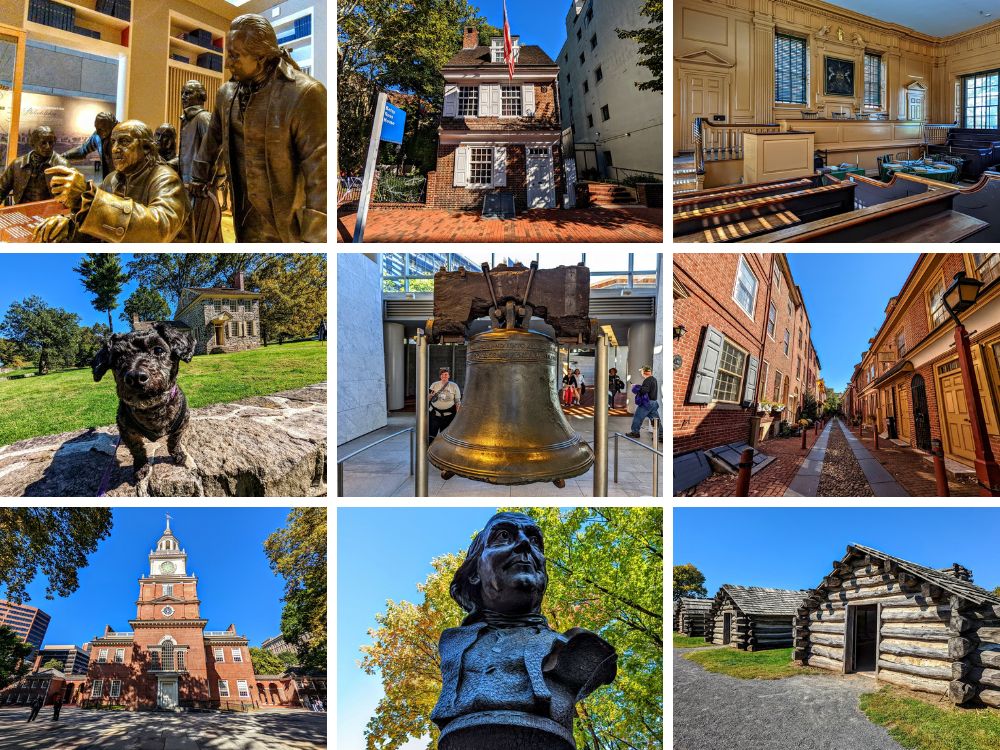
To make it easier to find the locations of all these historical things to do in Philadelphia, I’ve created the map below. All the attractions listed in this post are pinned on there with the exception of the murals and historic landmark markers as those can be found all over the city. Note that the National Museum Of Industrial History is found a little further north on the map.
1) Liberty Bell
The Liberty Bell began its life as the bell in the Pennsylvania State House’s steeple, having been mounted in 1753. Beset with problems throughout its construction, it eventually received its iconic crack at some point in the 1800s.

The bell is inscribed with the following:
Proclaim LIBERTY Throughout all the Land unto all the Inhabitants Thereof Lev. XXV. v X.
By Order of the ASSEMBLY of the Province of PENSYLVANIA for the State House in PhiladA
Pass and Stow
PhiladA
MDCCLIII
The spelling of Pennsylvania isn’t a typo; at the time of its creation, that was an accepted spelling of the state’s name. Pass and Stow relates to John Pass and John Stow, the people who recast the bell a couple of times.
The Liberty Bell is part of Independence National Historical Park which includes a few other sites on this list. To protect it from the elements, it’s housed inside and is free to visit. There’s a number of exhibits and information boards covering its history, so even if you’re familiar with the Liberty Bell, there are probably a lot of details you wouldn’t know about.
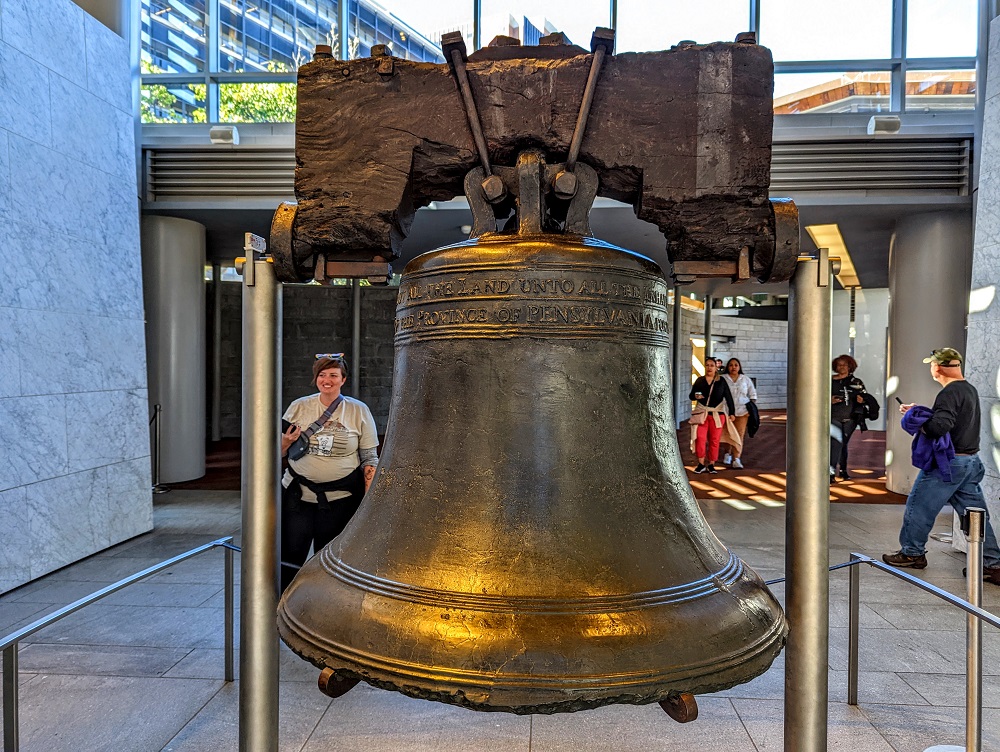
2) Independence Hall
One of the main parts of Independence National Historical Park is Independence Hall. Independence Hall originally served as the Pennsylvania State House and was its Capitol building for several decades before Pennsylvania made Lancaster its state capital.
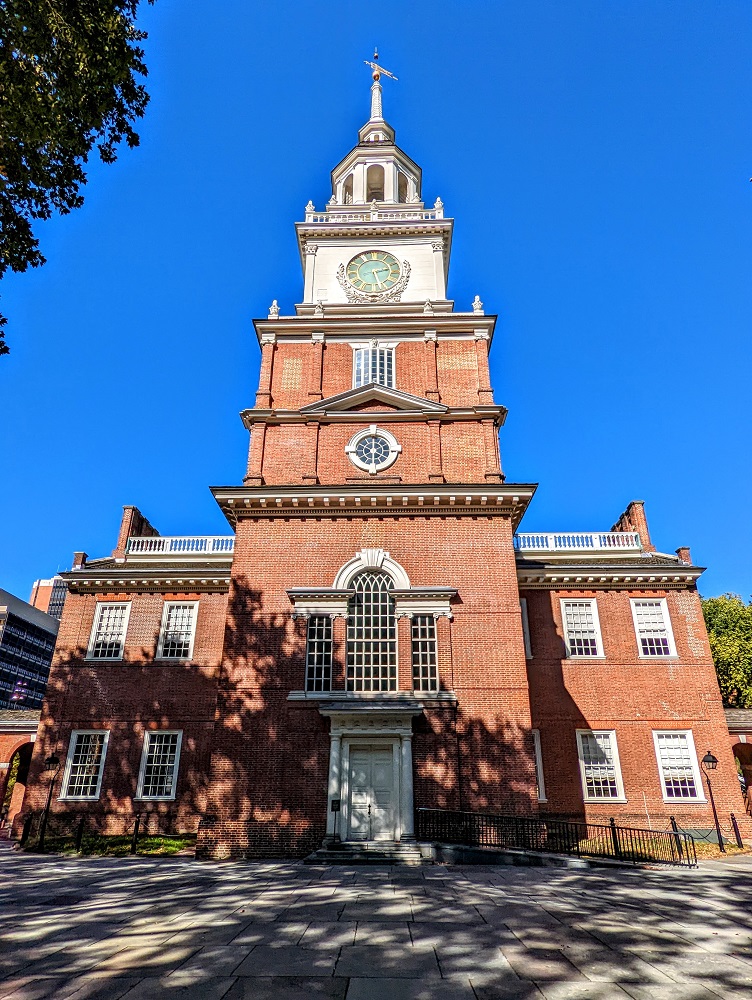
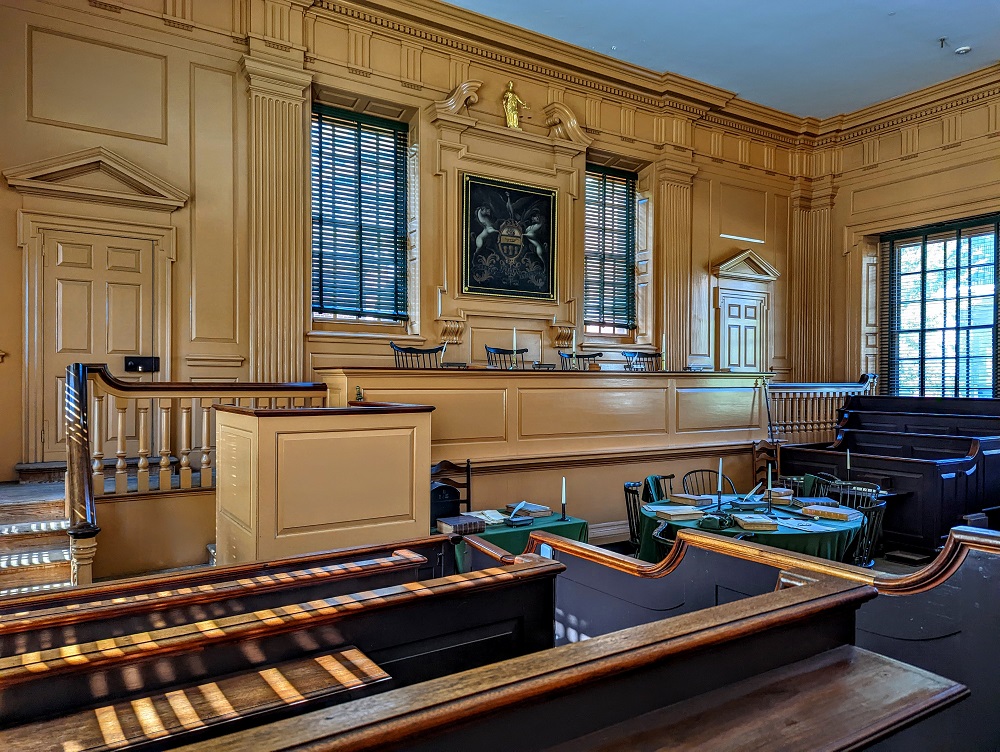
It went on to play a significant role in the formation of the United States of America as it was in this building – more specifically the Assembly Room – that the Founding Fathers debated and created both the Declaration of Independence and the Constitution.
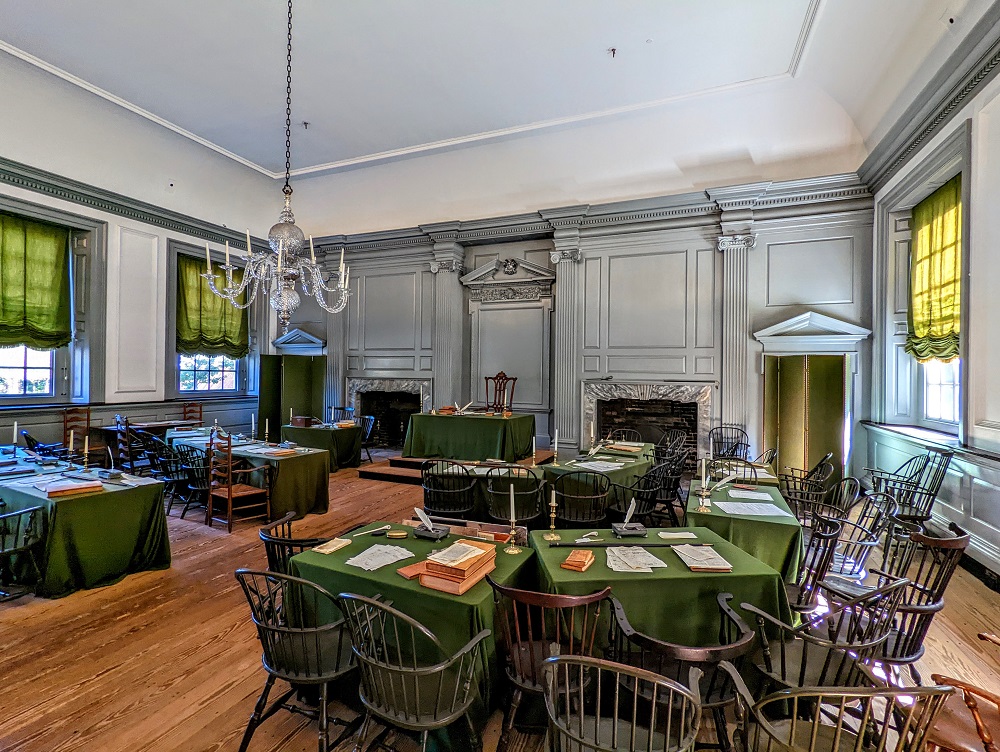
You have to get a timed ticket in order to take one of the guided tours of Independence Hall. Tickets themselves are free, but the National Park Service does charge a nominal $1 reservation fee. You can book your tickets at Recreation.gov here.
In addition to the guided tour, the building’s West Wing features exhibits referred to as the Great Essentials. These are original printed copies of the Declaration of Independence, the Articles of Confederation and the U.S. Constitution.

3) Congress Hall
Next to Independence Hall (and also part of Independence National Historical Park) is Congress Hall. Similar to Independence Hall, there are free guided tours of Congress Hall but timed tickets aren’t needed. Instead, it’s simply first come, first served, with tours running every 20 minutes.
Congress Hall served as the capitol building of the United States from 1790 to 1800, featuring the House chamber downstairs and the Senate chamber upstairs. As you can see in the photo below, the House Chamber had balcony seating. Those seats were open to the public in an attempt to provide transparency in the way government was conducted.
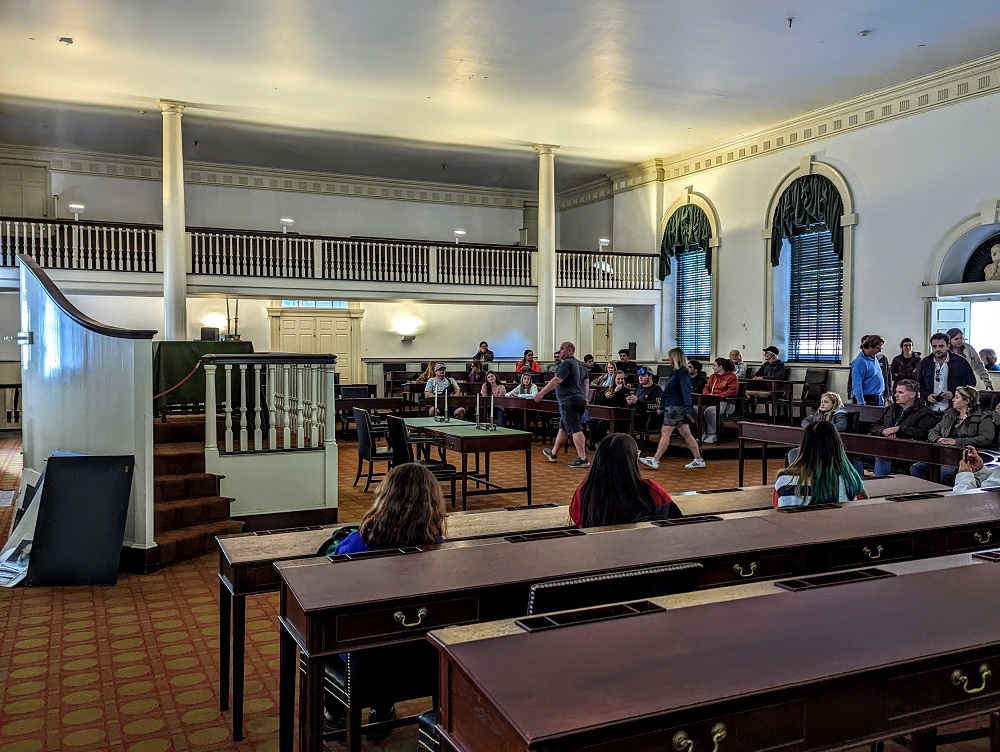
The Senate Chamber was a different matter. Senators at the time weren’t elected and they wanted to conduct their meetings behind closed doors. As a result, there was no balcony or public seating available for members of the public, although that eventually changed.
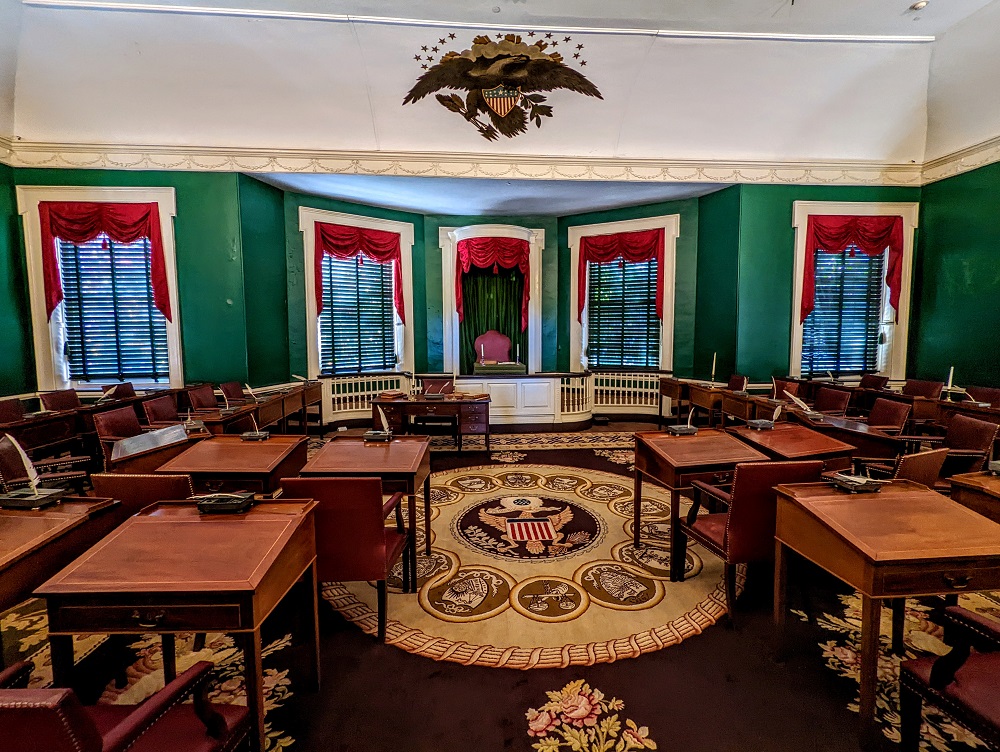
4) Historic Landmark Signs
Throughout Philadelphia there are blue historical landmark signs to be found. These have interesting little tidbits of information about what happened at those sites in the city in the past – here’s just a few of them.
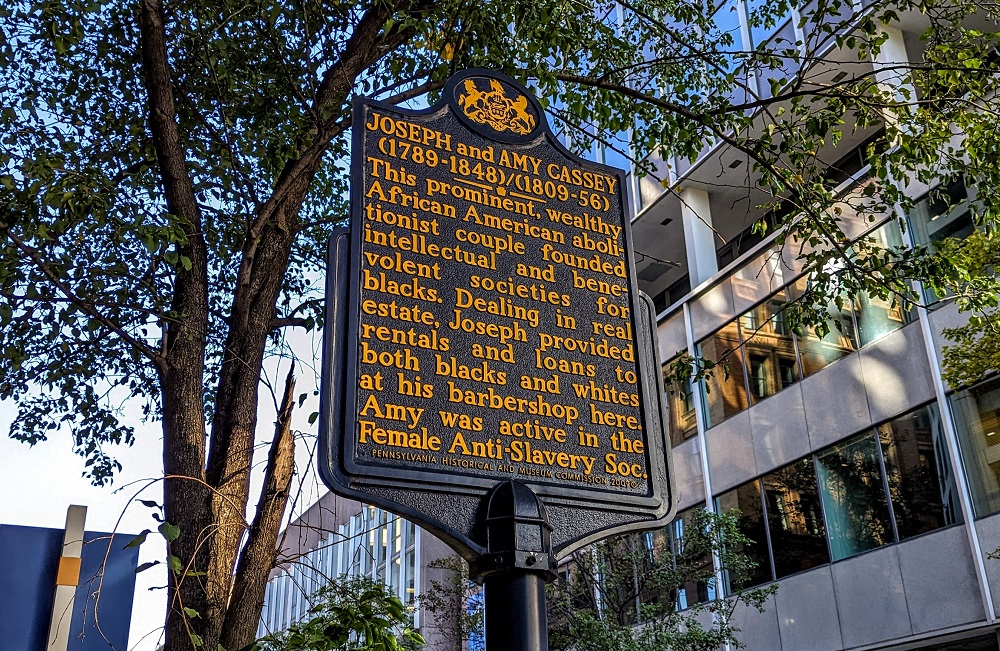
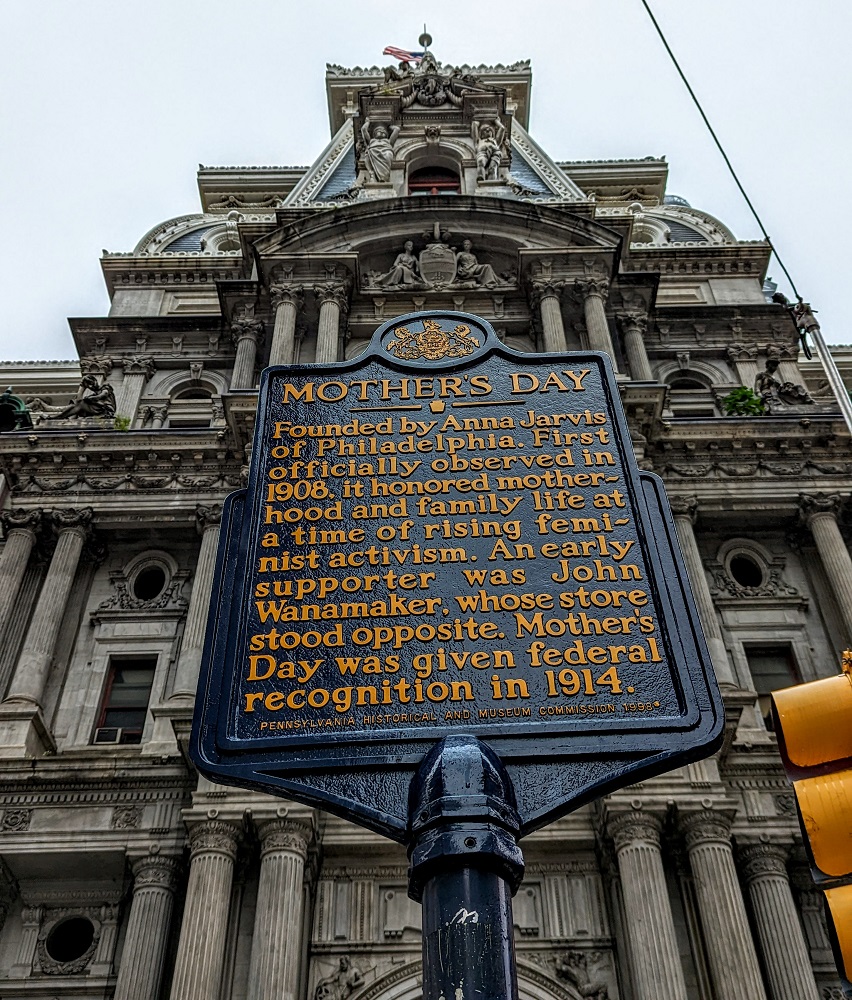

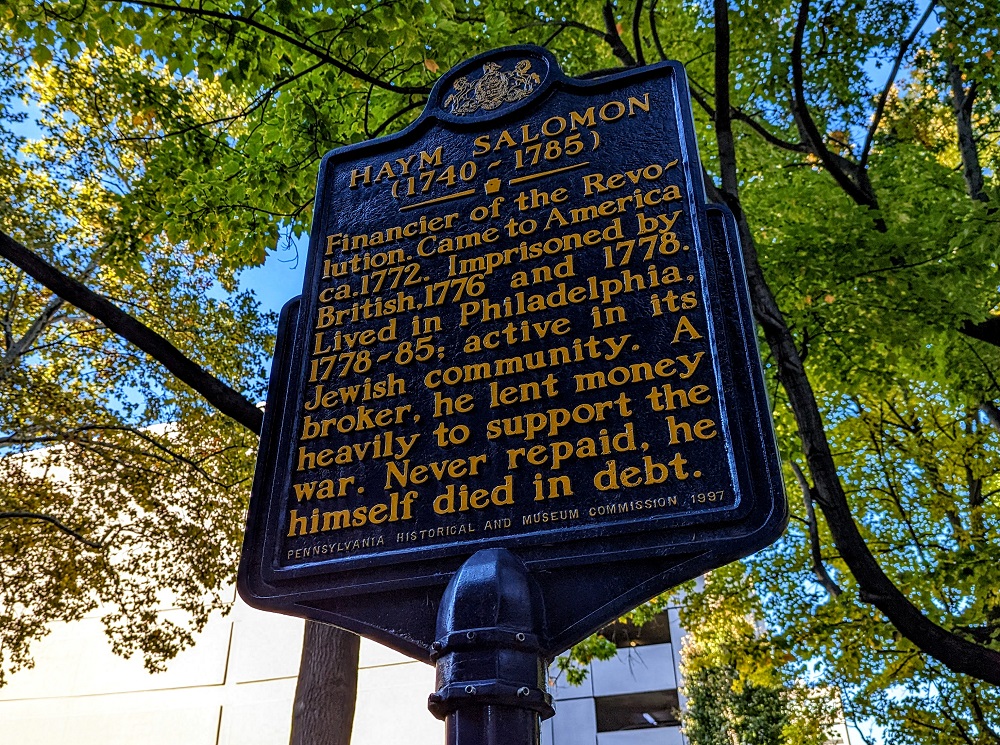
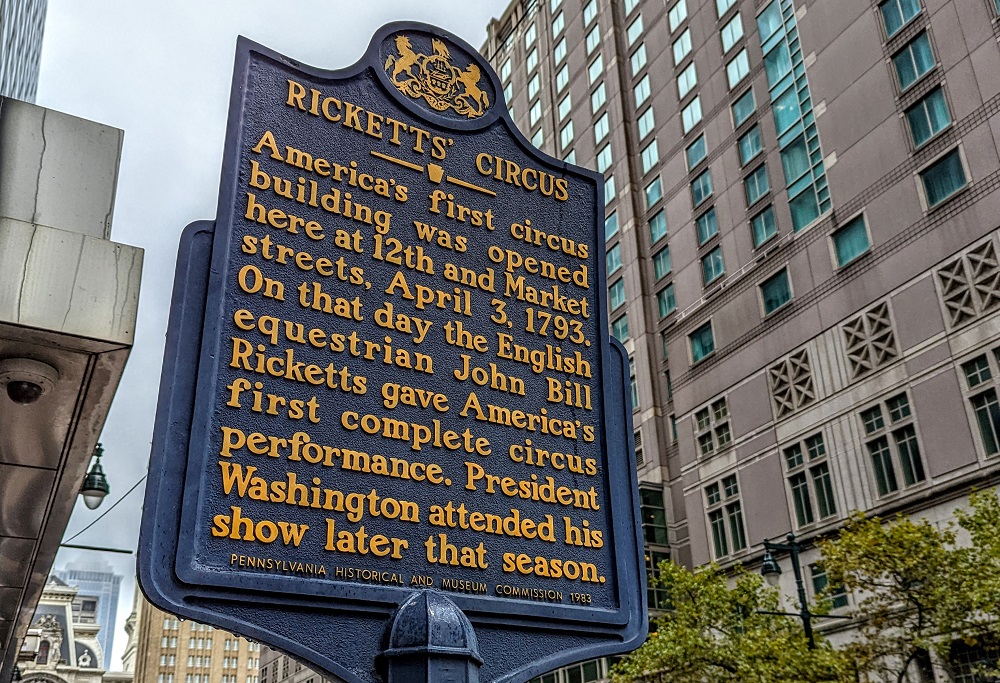
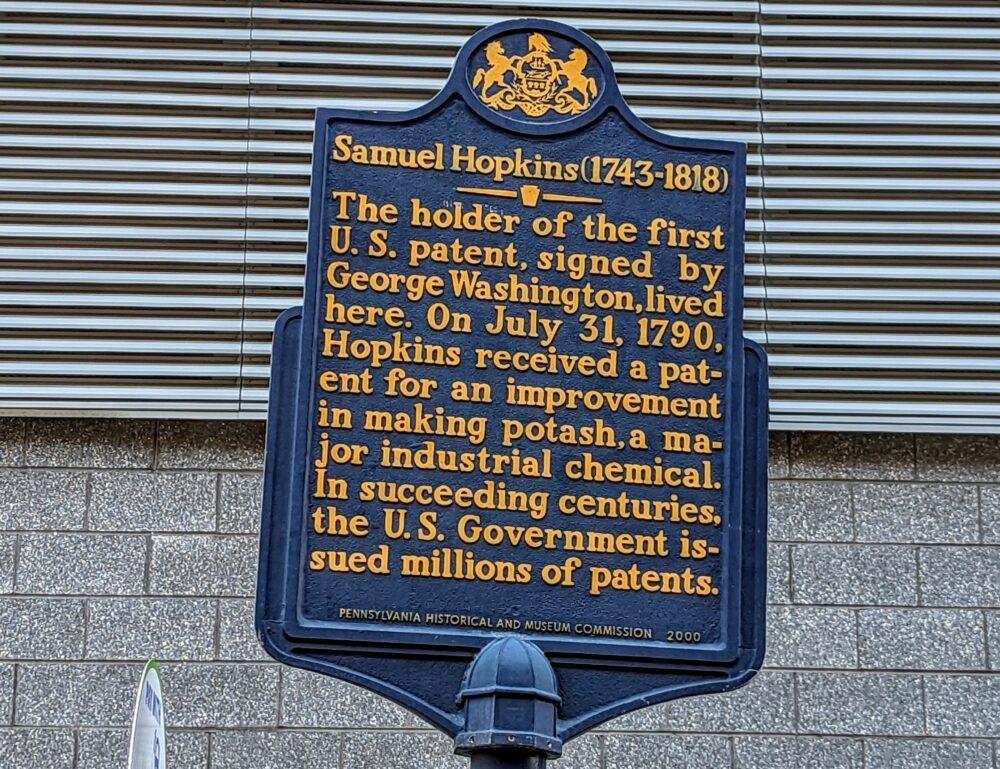
5) Valley Forge National Historical Park
Although it’s not in Philadelphia itself, Valley Forge National Historical Park is only 30 minutes northwest of the city and is worth a visit. Valley Forge was the site where General George Washington’s army set up an encampment in the winter of 1977/78.
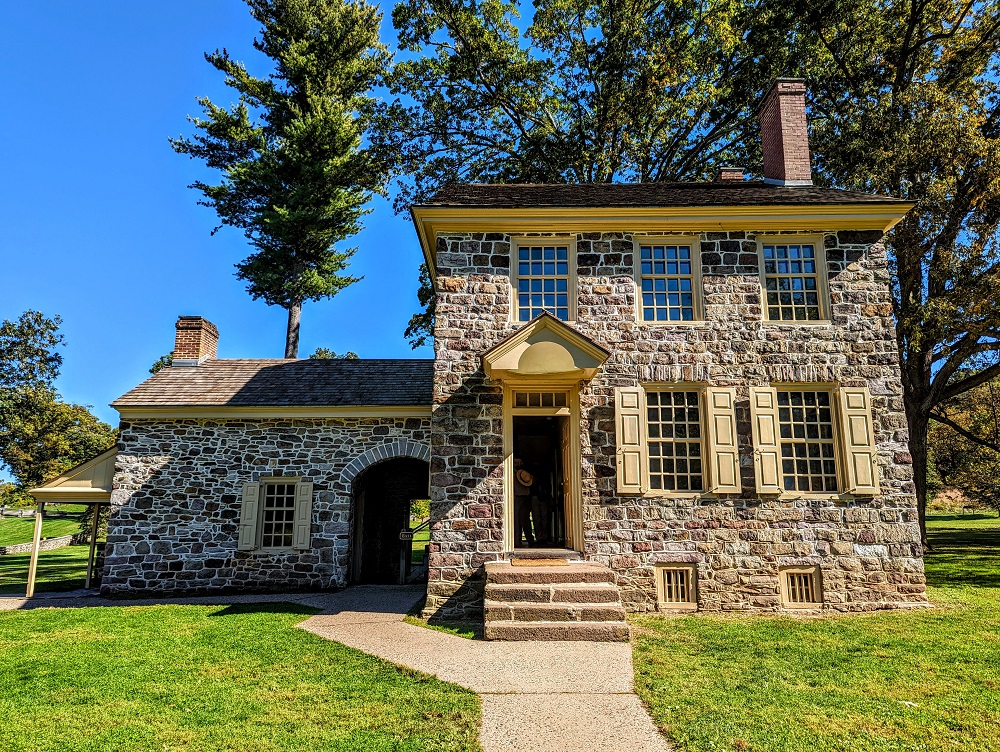
Washington’s Headquarters was a much more pleasant living and working environment than the regular soldiers had to endure. Enlisted men and non-commissioned officers resided in log huts. The 2,000+ log huts built at Valley Forge meant that for the relatively short period that they stayed there it was the fourth largest city in the US.
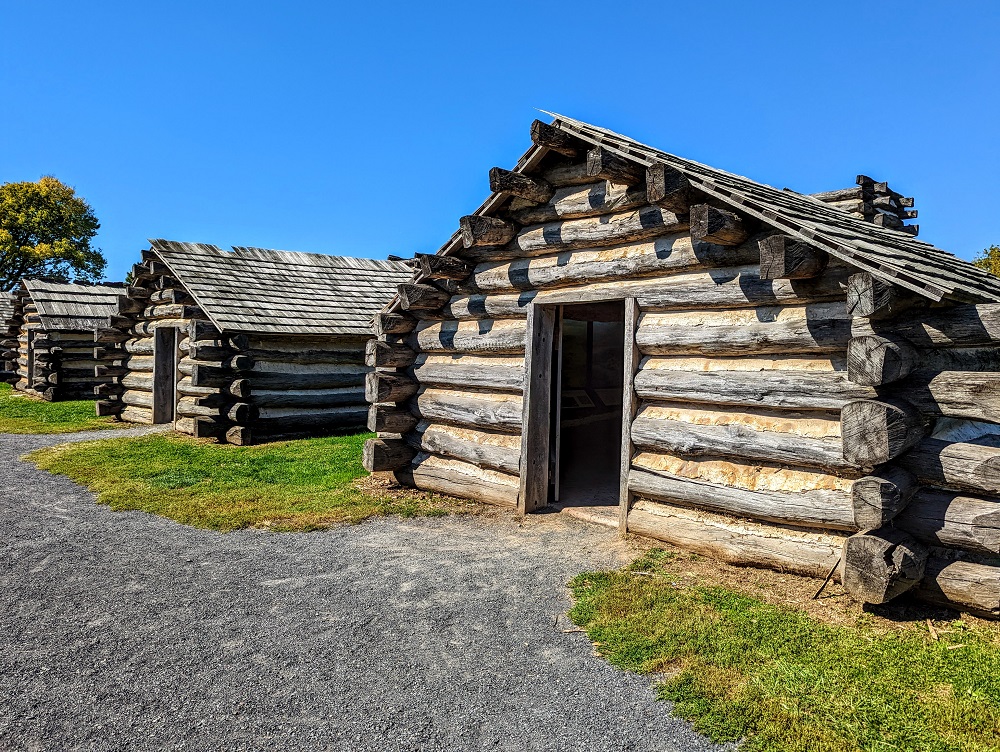
Battling harsh conditions, crowded accommodations (there were 12 men per hut), disease running rampant and limited food and clothing supplies (some soldiers didn’t even have pants to wear), it wasn’t a pleasant experience for the army. However, the camaraderie they built and the training the soldiers received at Valley Forge proved critical in their subsequent ability to beat the British army.

We particularly appreciated how pet-friendly Valley Forge was. Dogs are allowed everywhere in the park with the exception of inside buildings which meant that Truffles was able to join us.
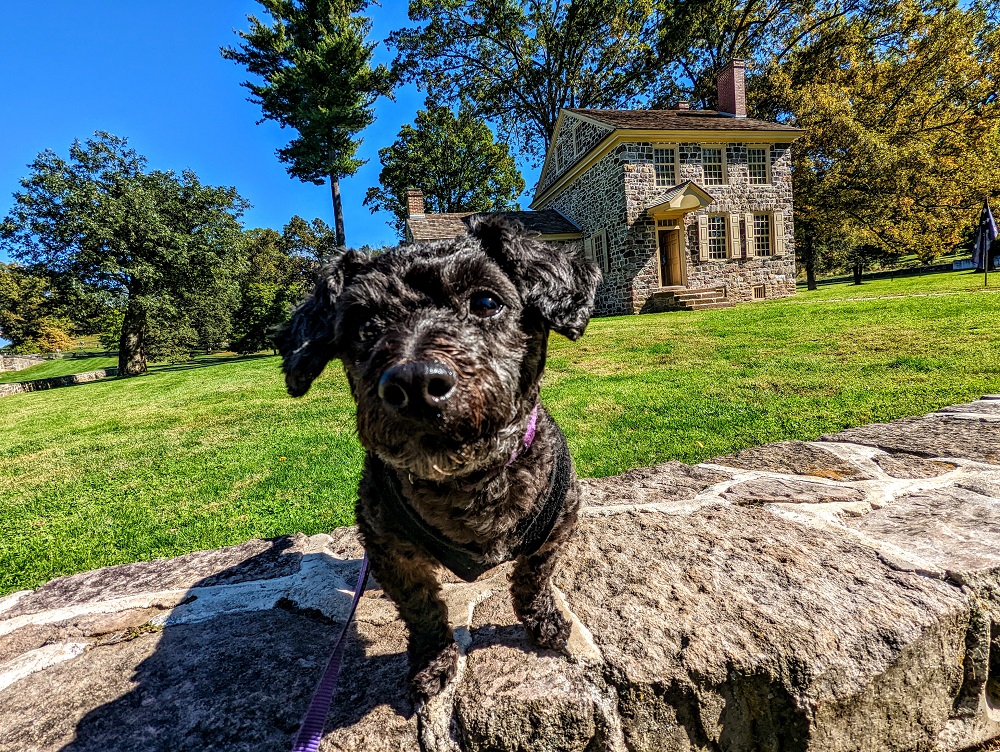
6) Reading Terminal Market
Downtown Philadelphia is a fairly walkable city, so exploring all the sites means you’ll likely work up an appetite. A great place to find some food is Reading Terminal Market, a massive indoor market with tons of restaurants and vendors that dates back to 1893.
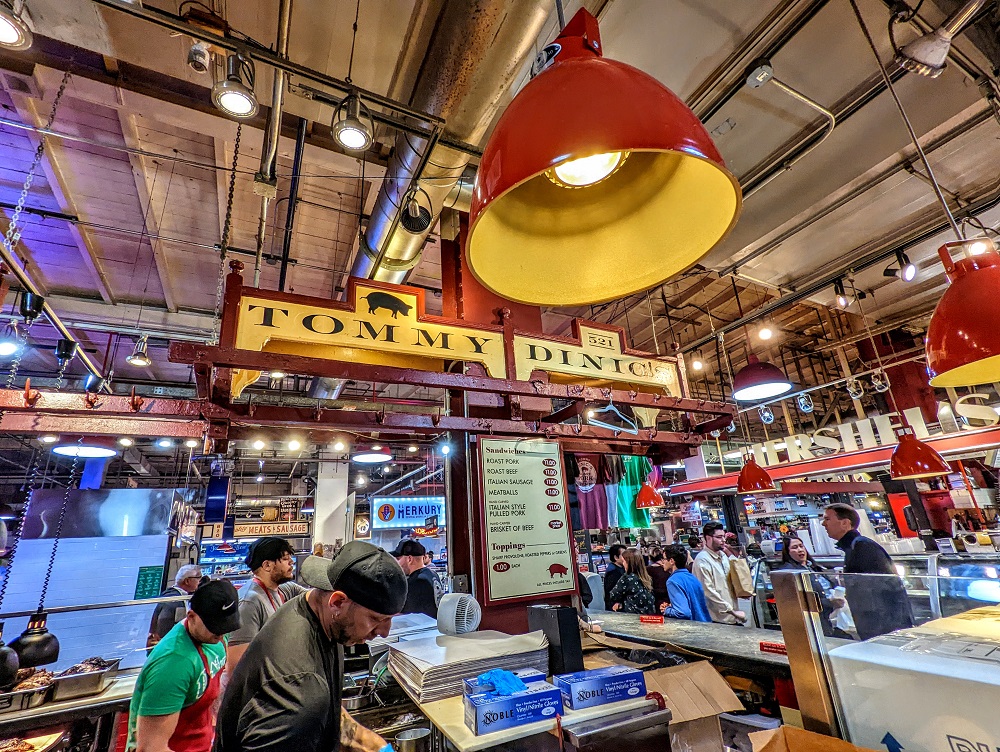
We were told we needed to get a sandwich from Tommy Dinic’s, so we hunted around in there for a couple of minutes before finding it. I got their roast pork sandwich with peppers, while Shae got their roast beef sandwich. The sandwiches were good, but we would’ve liked some kind of condiment like mustard or au jus for the roast beef sandwich (I know, saying that is probably sacrilege for people from Philly!)
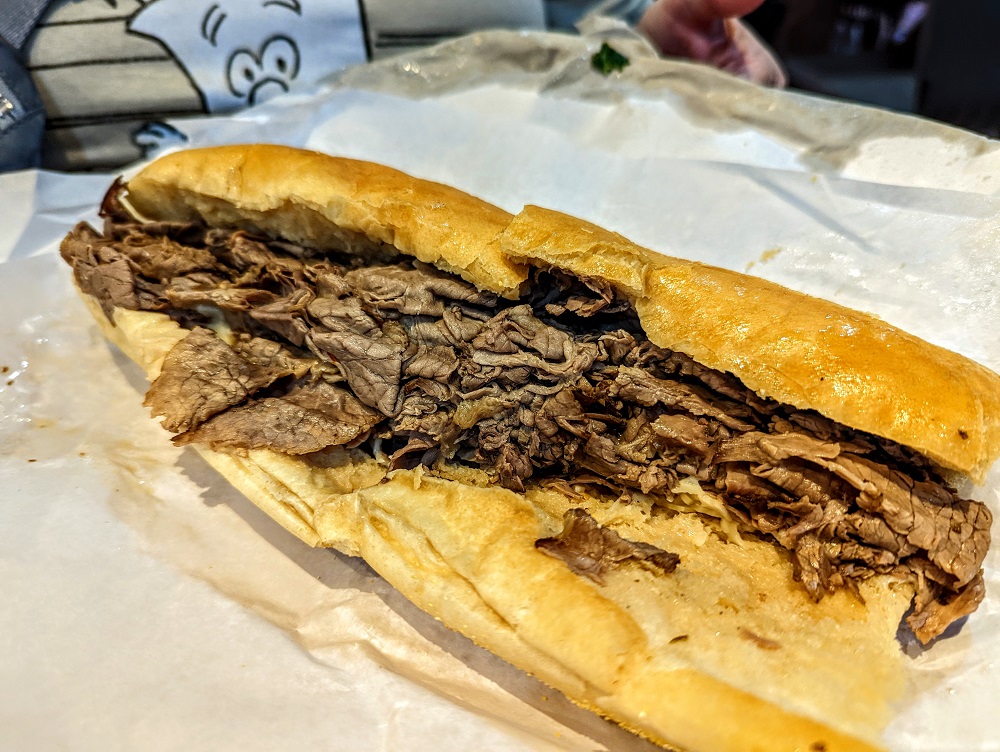
We’d also been told that we needed to get donuts from Beiler’s Donuts in Reading Terminal Market. We’re never ones to say no to donuts, so we stopped by there afterwards.
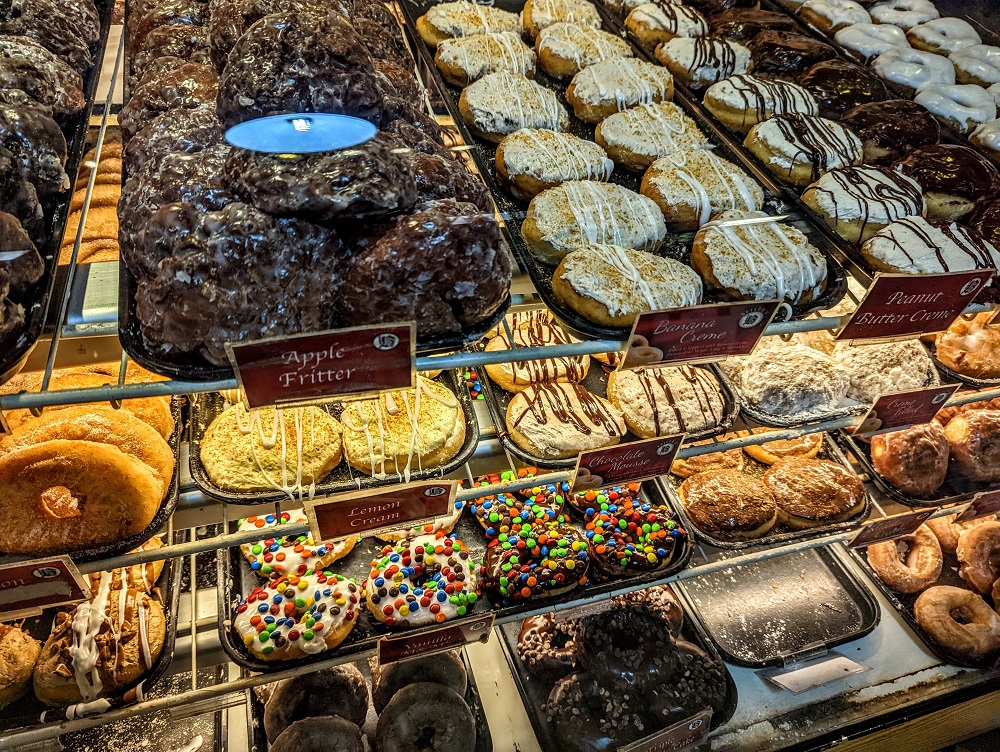
It was hard to choose which donuts to get because they had such a delicious-looking selection available, but Shae and I finally managed to settle on two each. Shae got a plain glazed and a chocolate frosted, while I got a raspberry jelly filled one and what I think was a caramel apple one (it’s been a few weeks since we ate these).
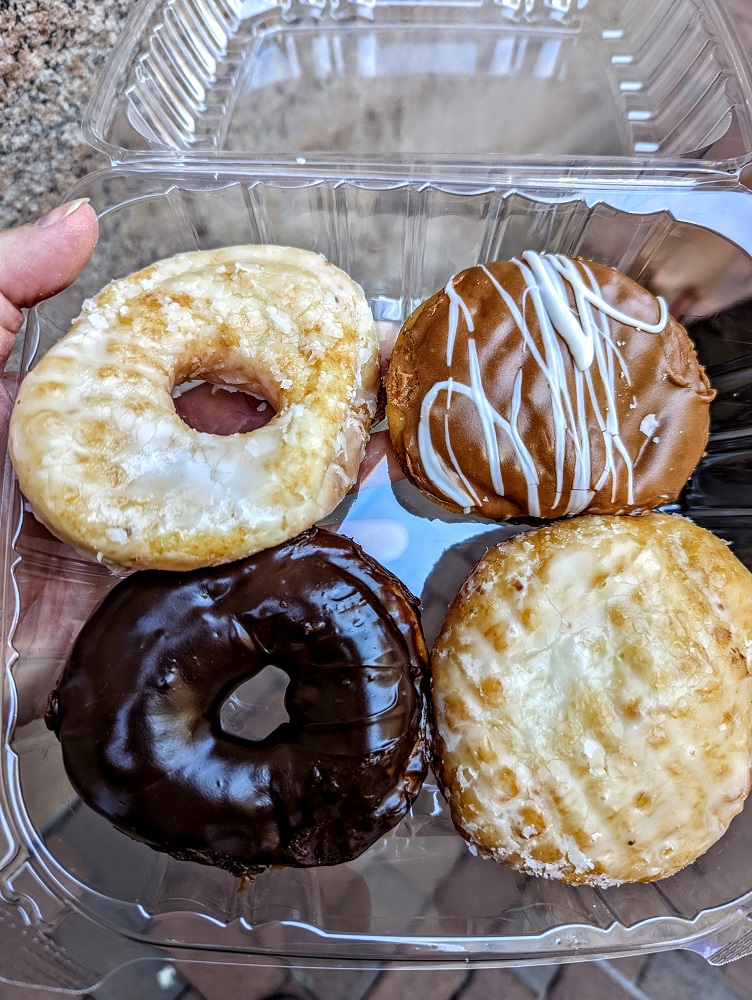
Not only did they look delicious, but they tasted delicious too. In fact, they’re definitely in my top 3 donuts of all time. Before visiting Beiler’s Donuts, I’d have said my favorite donut place was Round Rock Donuts in Round Rock, TX, followed by Hurts Donuts – a small chain we first experienced in Tulsa. Beiler’s seriously rivaled Round Rock Donuts for first place on my list – the donuts were soft, flavorful, full of filling and simply amazing. If and when we return to Philadelphia, Beiler’s will likely be our first port of call!
7) Betsy Ross House
Everyone knows that it was Betsy Ross who made the first official flag of the US.
Except she didn’t.
Well, she might have, but we don’t actually know that for certain.
It turns out that much of what’s “known” about Betsy Ross’ involvement in creating the first US flag is based on accounts from her relatives about 100 years after this event supposedly happened. They might therefore be correct, but there’s unfortunately no verifiable evidence that it was indeed Betsy Ross who sewed that first flag.
Despite that, the Betsy Ross House is still worth a stop during a visit to Philadelphia.
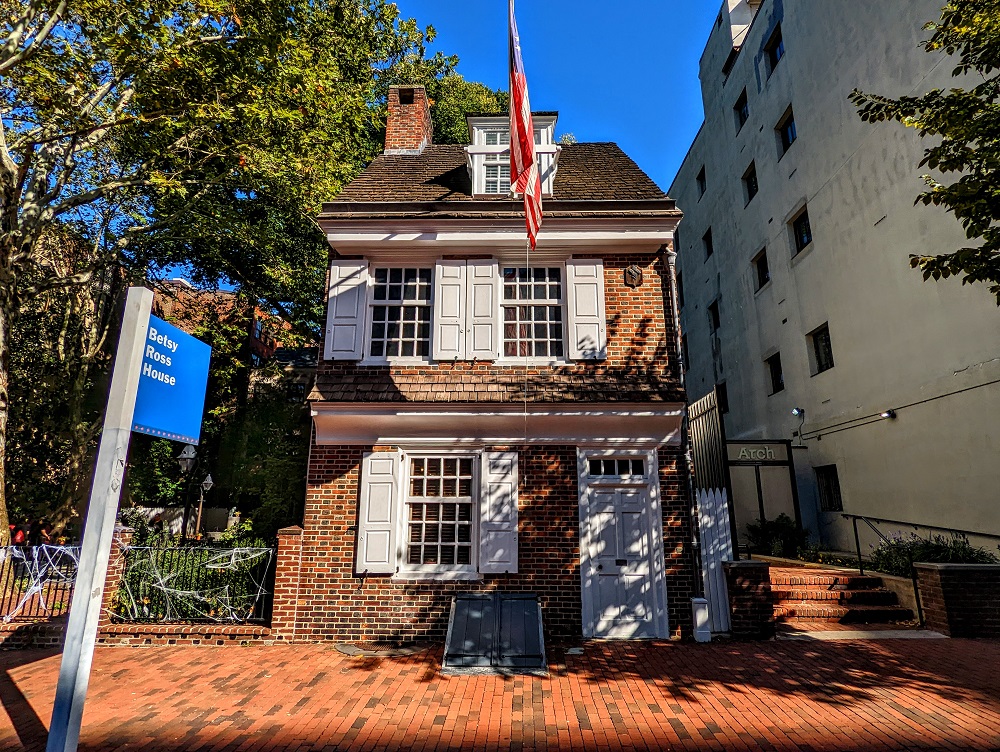
When we visited in October 2022, tickets were $8 for adults and $6 for children, seniors, military and students (children under 3 are free). You can also pay an extra $2 per person for their audio tour which gives you a handheld device that provides even more comprehensive information as you go around. Shae and I paid that extra $2 and felt like it was worth it as it did enhance the experience.
If Betsy Ross was indeed the first person to make the US flag, it’s likely that she would’ve made it upstairs in one of the bedrooms. Although they had an upholstery business downstairs, if she was caught by the British army making these flags, she could – and likely would – have been charged for treason.
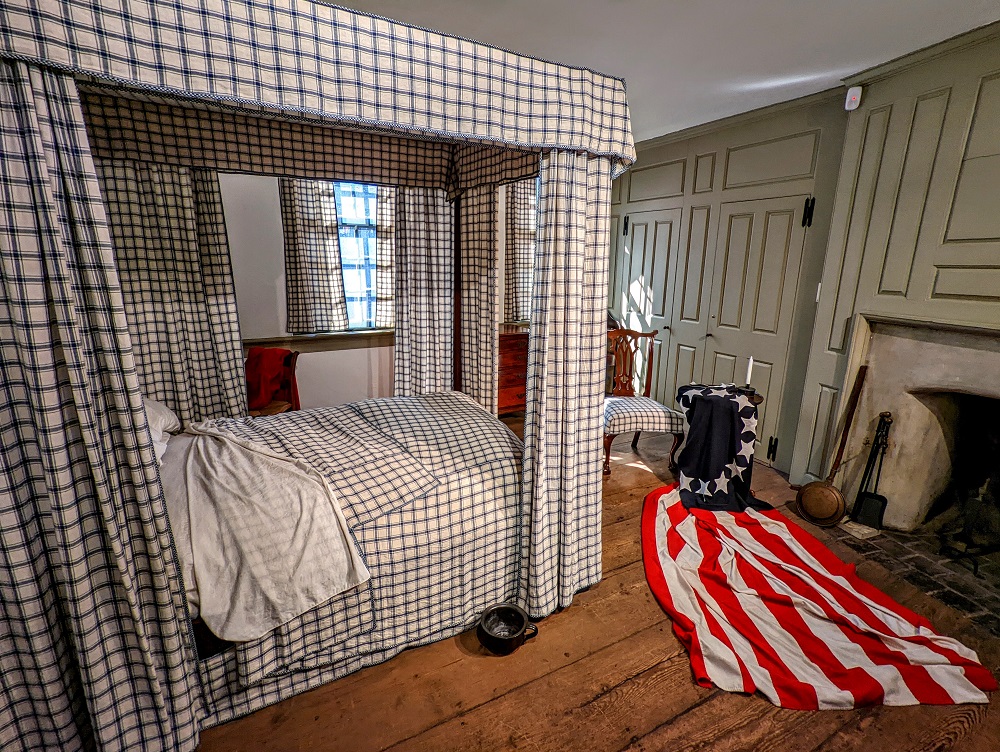
8) Elfreth’s Alley
Elfreth’s Alley is an incredibly cute alley in Philadelphia with some of its homes dating back to the early 1700s. In fact, the it’s the oldest continually inhabited residential street in the US.
As soon as you step foot in the alley, you feel like you’ve been transported back in time or to a European city.
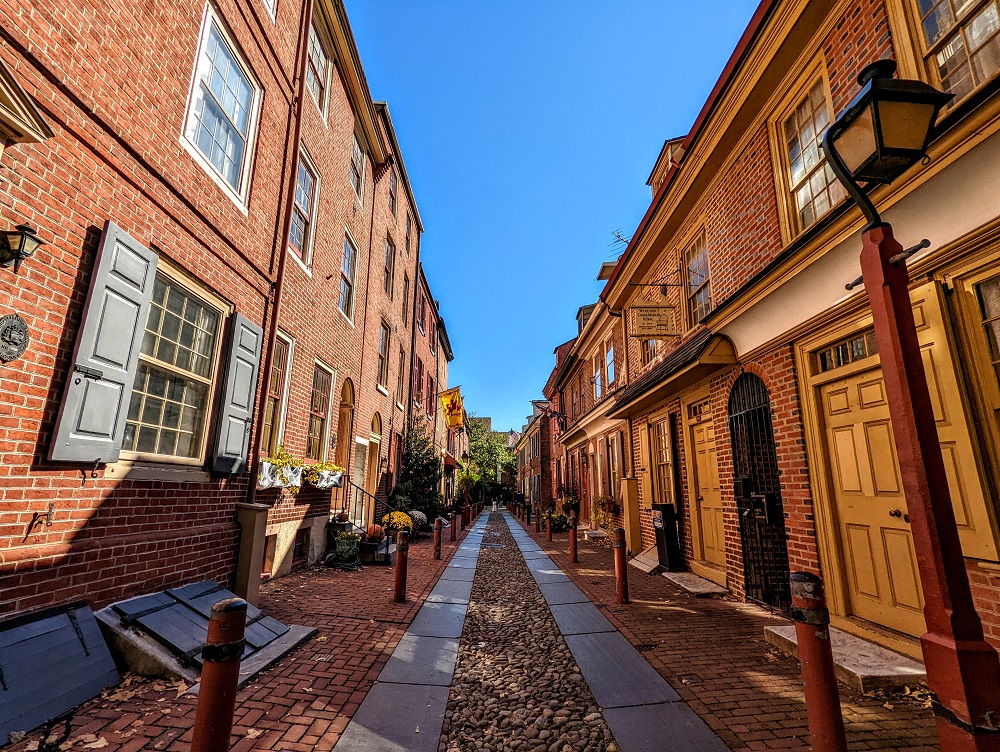
9) Benjamin Franklin’s Grave
Benjamin Franklin was born in Boston, MA but ran away to Philadelphia when he was only 17 years old and spent much of his life there. He passed away at home in Philadelphia on April 17, 1790 and is buried in Christ Church Burial Ground.
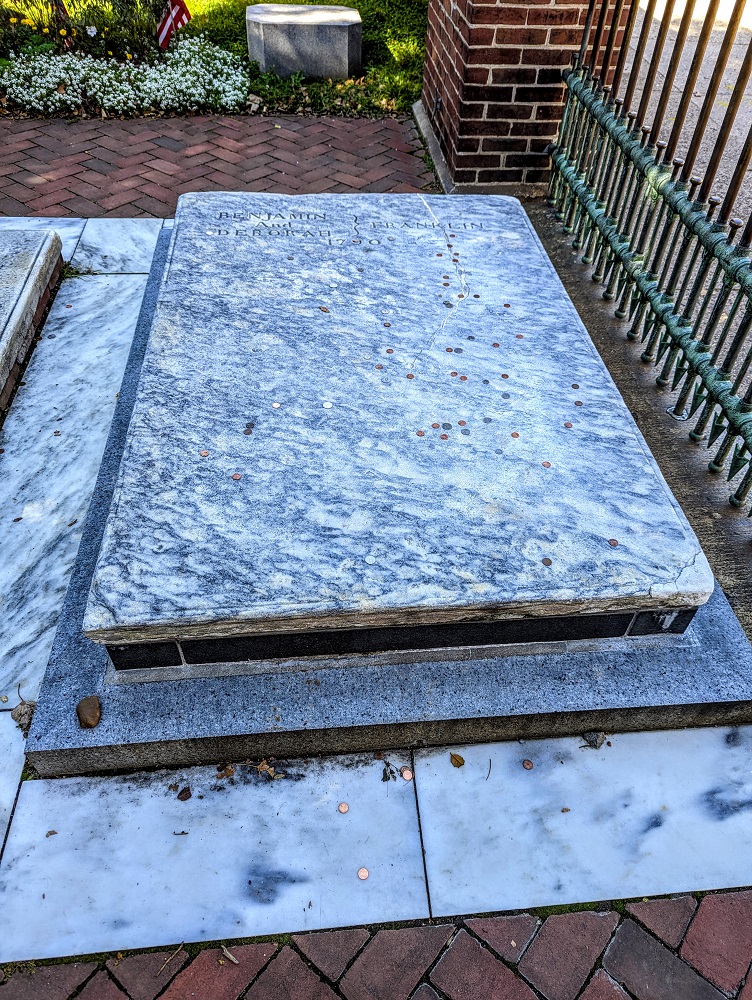
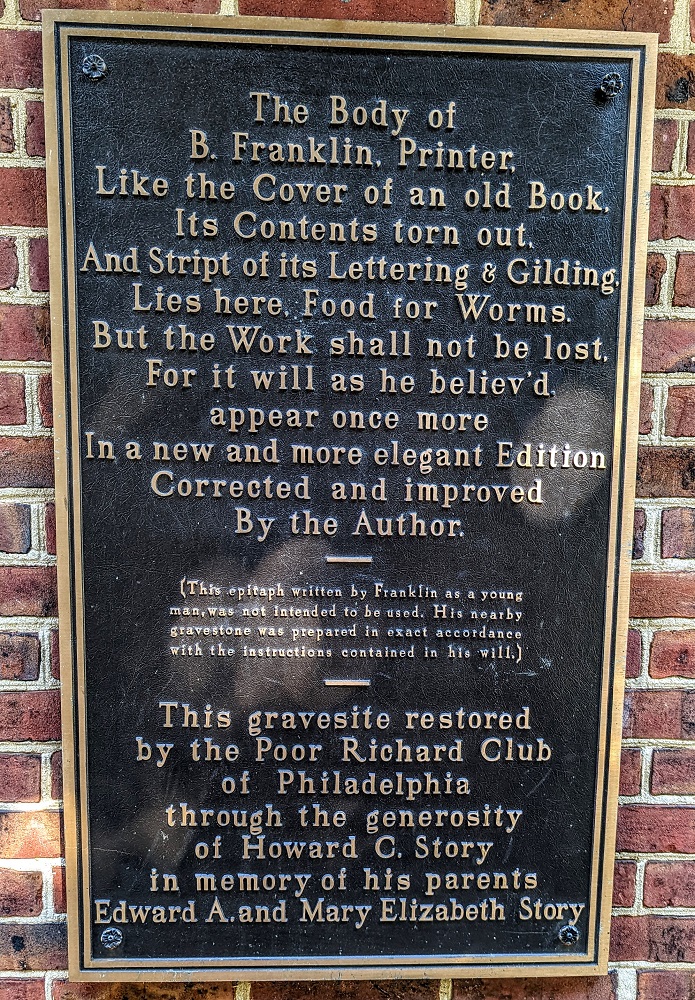
Christ Church Burial Ground is the final resting place of five signers of the Declaration of Independence, one of whom is Benjamin Franklin. Entry to the burial ground costs $5 for adults and $2 for children, but if all you’re interested in is seeing Benjamin Franklin’s grave, you might not want to pay for entry.
That’s because his grave is right next to the sidewalk outside of the burial ground with a metal gate between the two. That means you can see his grave without having to pay the entrance fee; the gate is wide enough for you to be able to put your hand through and take a photo on the other side too.
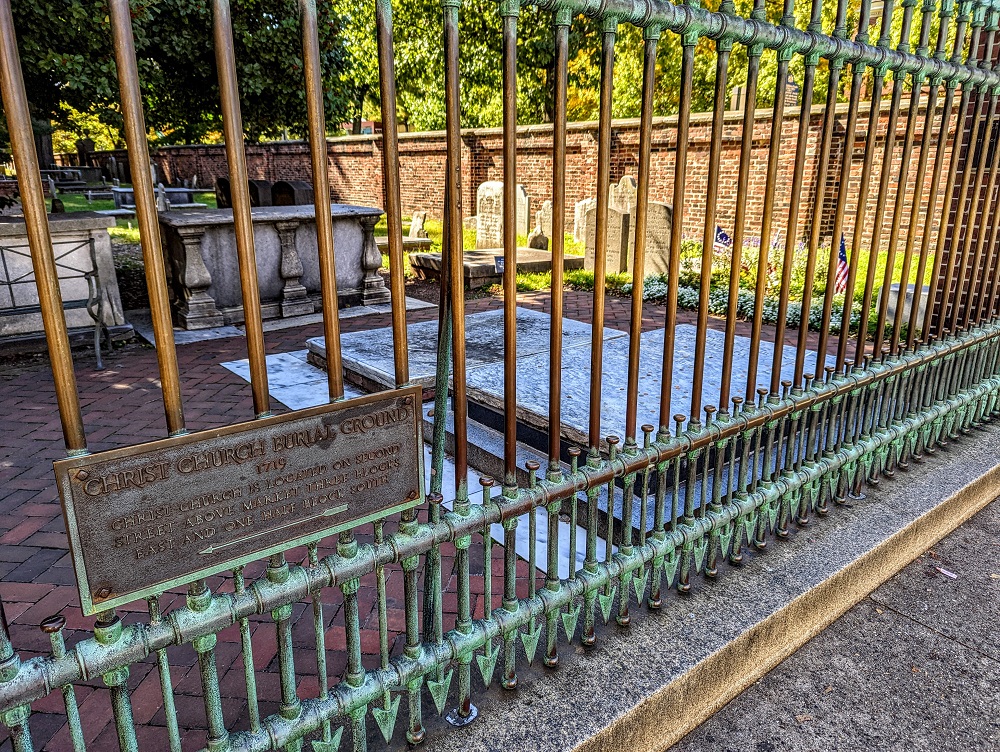
10) Fragments Of Franklin Court
As mentioned above, Benjamin Franklin spent much of his adult life living in Philadelphia. His home no longer stands in Franklin Court, but the site of his former house is worth visiting nonetheless.
It’s now part of Independence National Historical Park and there’s a ghost house constructed on the site to give you an idea of how it once looked.
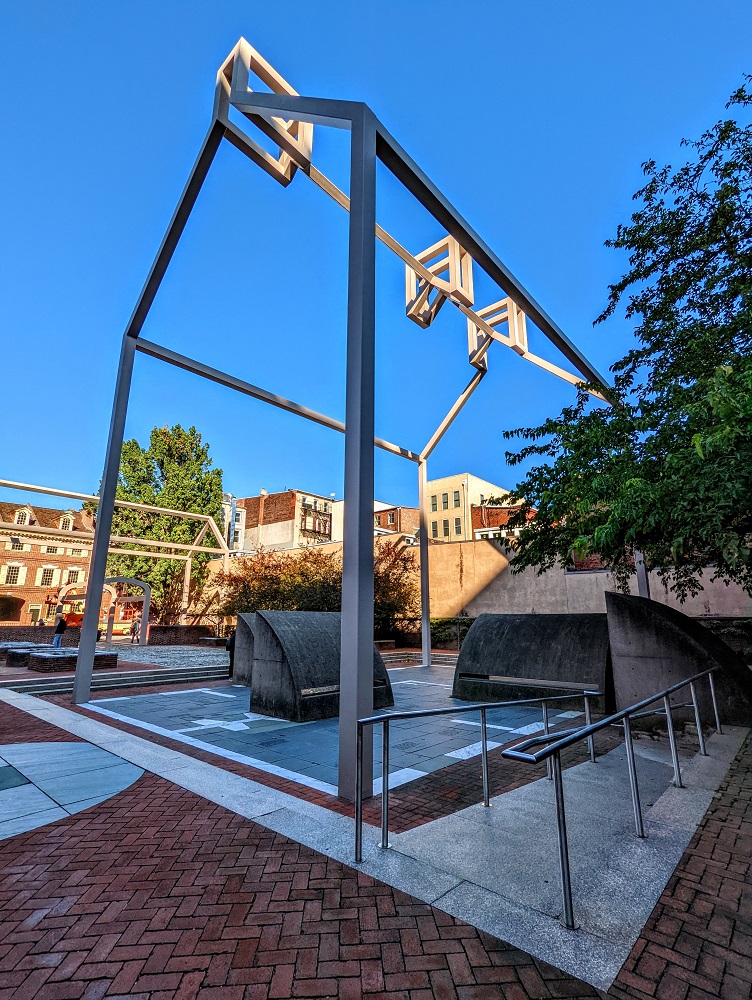
When wandering around the courtyard, there are stones on the floor sharing more about his home – the rooms that were once where you’re standing, quotations from correspondence Benjamin Franklin sent his wife while he was away that related to their home, etc.
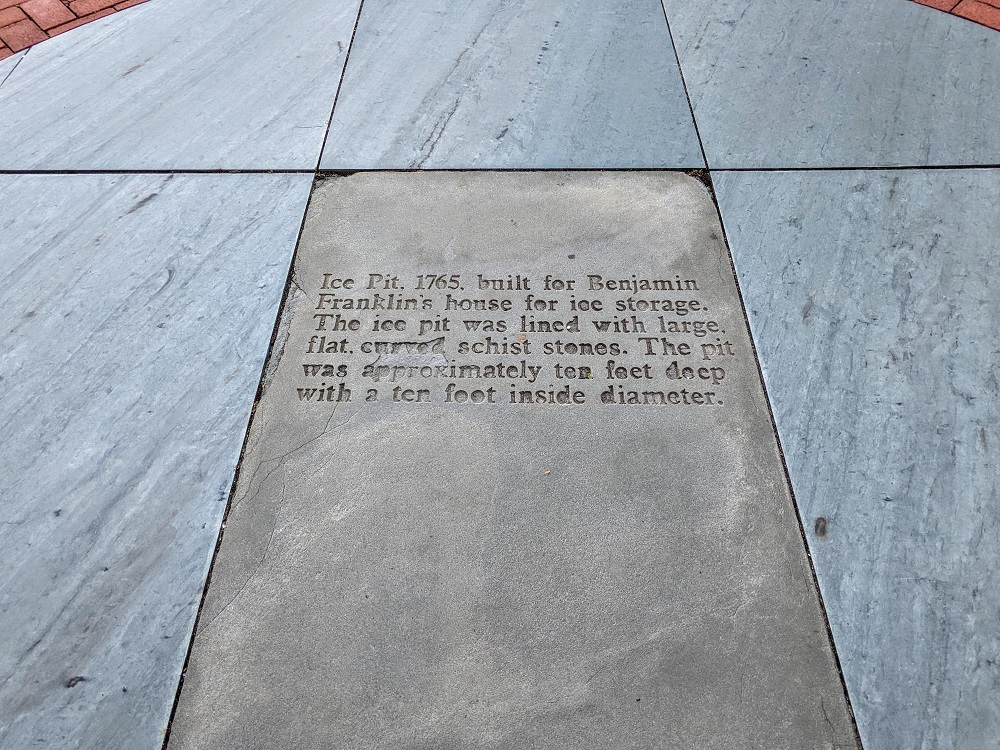

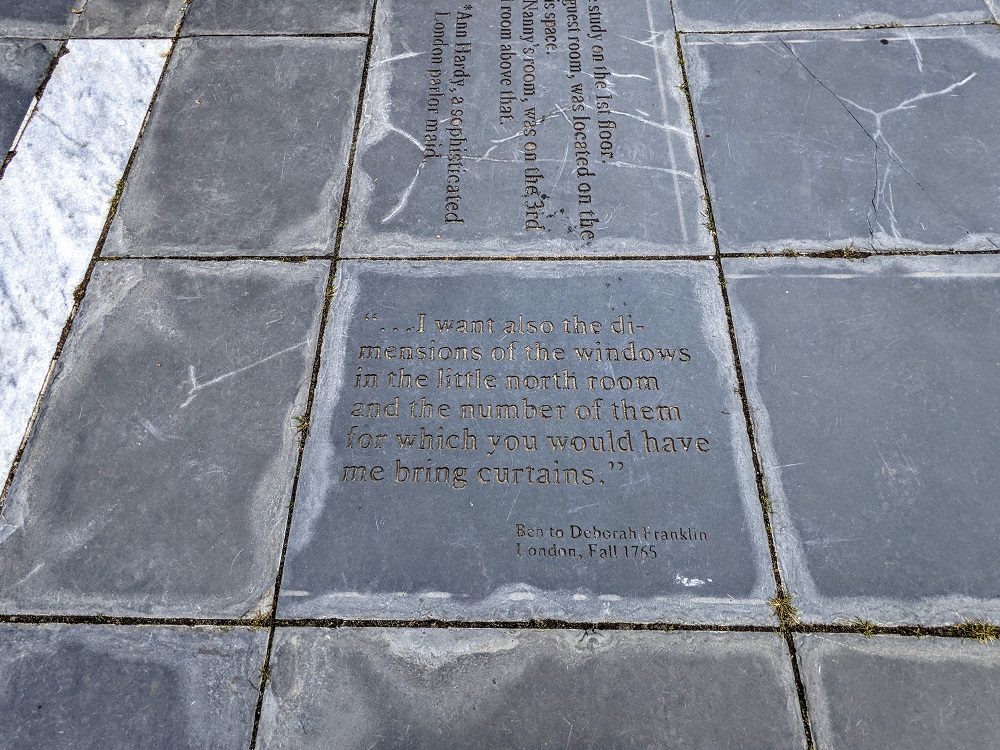
Even though the home itself is no longer standing, there are a few remains of the foundations that can be seen.
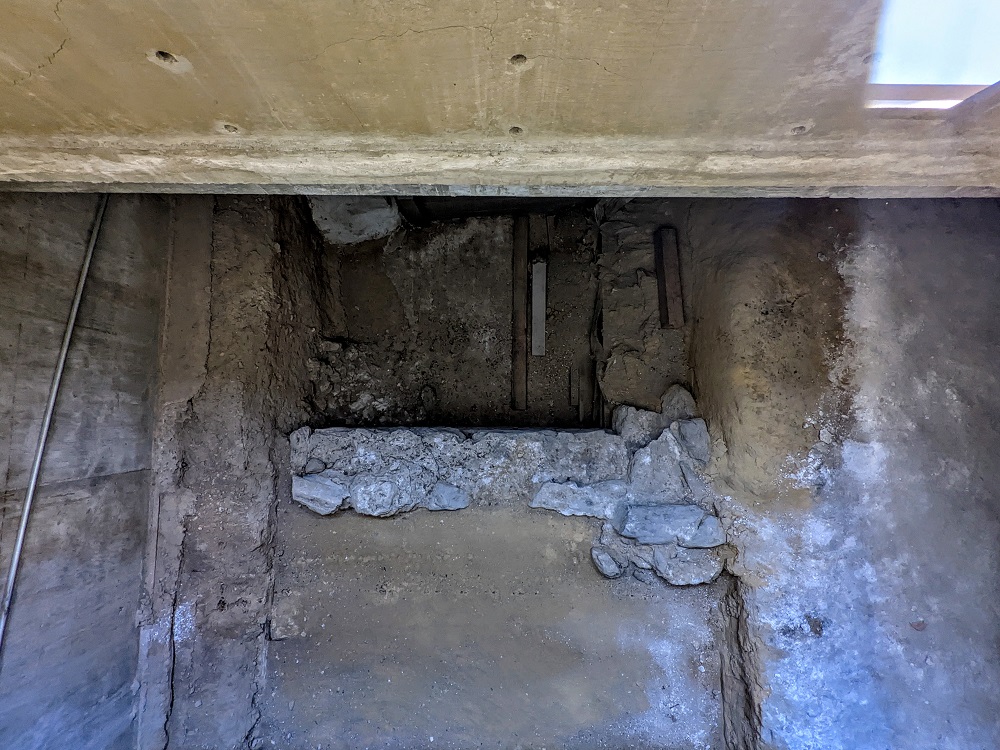
11) Franklin Court Printing Office
In addition to the many other jobs and roles that Benjamin Franklin had during his life, one of the most important of them was his job as a printer and newspaper editor. His printing office is no longer around, but in Franklin Court – next to the Fragments of Franklin Court and the Benjamin Franklin Museum – is the Franklin Court Printing Office.
This too is part of Independence National Historical Park and is free to enter. Inside, you can see the kind of equipment that would’ve been used by Benjamin Franklin back in the day, as well as a live demonstration of either the printing process or typesetting.
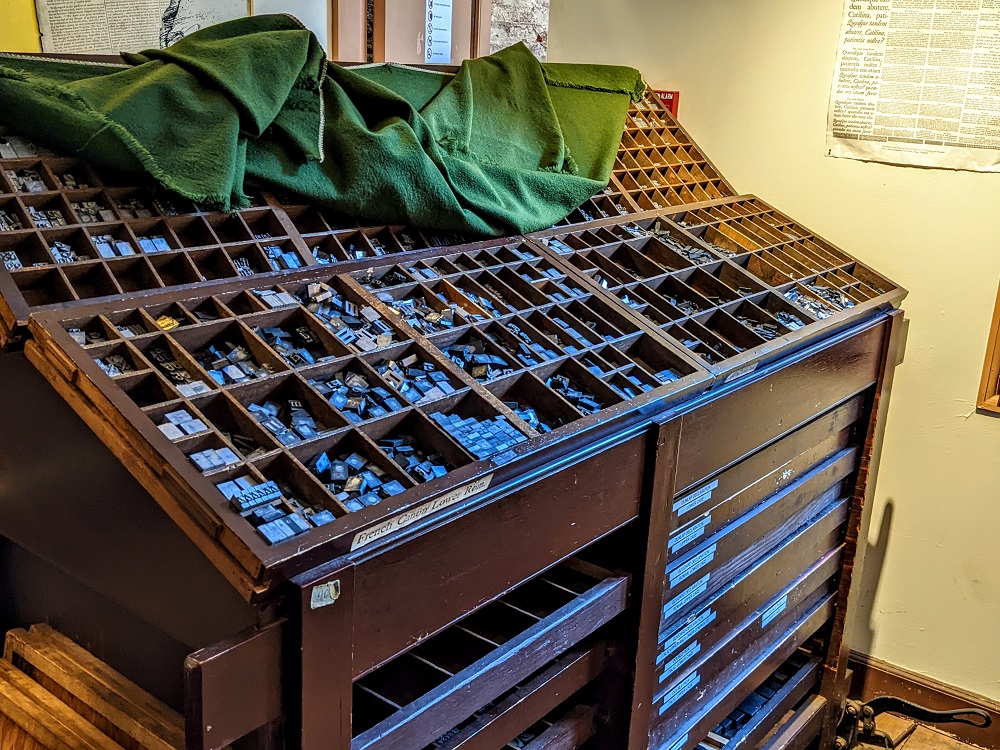
The day we visited we got to see how the printing process worked – here’s a video of the demonstration we saw.
12) President’s House Site
Washington D.C. has been the nation’s capital since 1800, but before that Philadelphia spent a number of years as the capital of the US. There was no White House for the President, but some people in Philadelphia effectively tried to bribe George Washington (and subsequently John Adams) with the offer of a large mansion in the hope that would entice them to keep the nation’s capital in Philadelphia.
They declined that ornate home, instead choosing to live in a home that was more modest. Similar to Benjamin Franklin’s home, the President’s House is no longer standing but there are ghost structures you can visit at the President’s House Site.
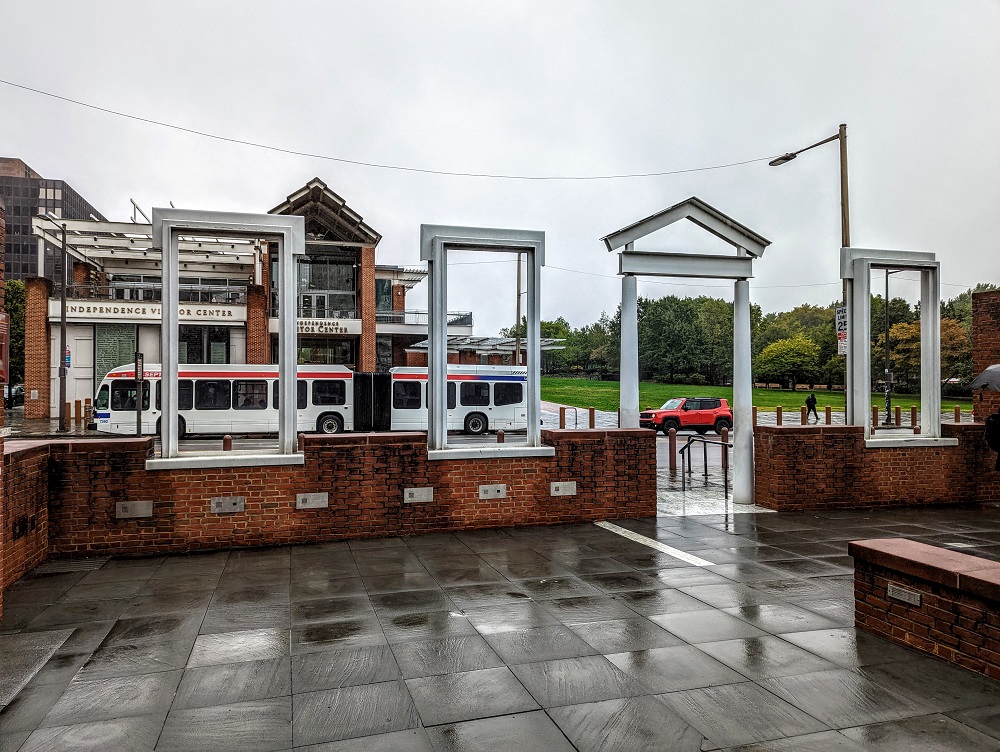
This is an outdoor exhibit next to where the Liberty Bell is located and is free to visit. In addition to the ghost structures, there are exhibits about the people who lived and worked in the house, as well as about slavery in the nation’s early days.
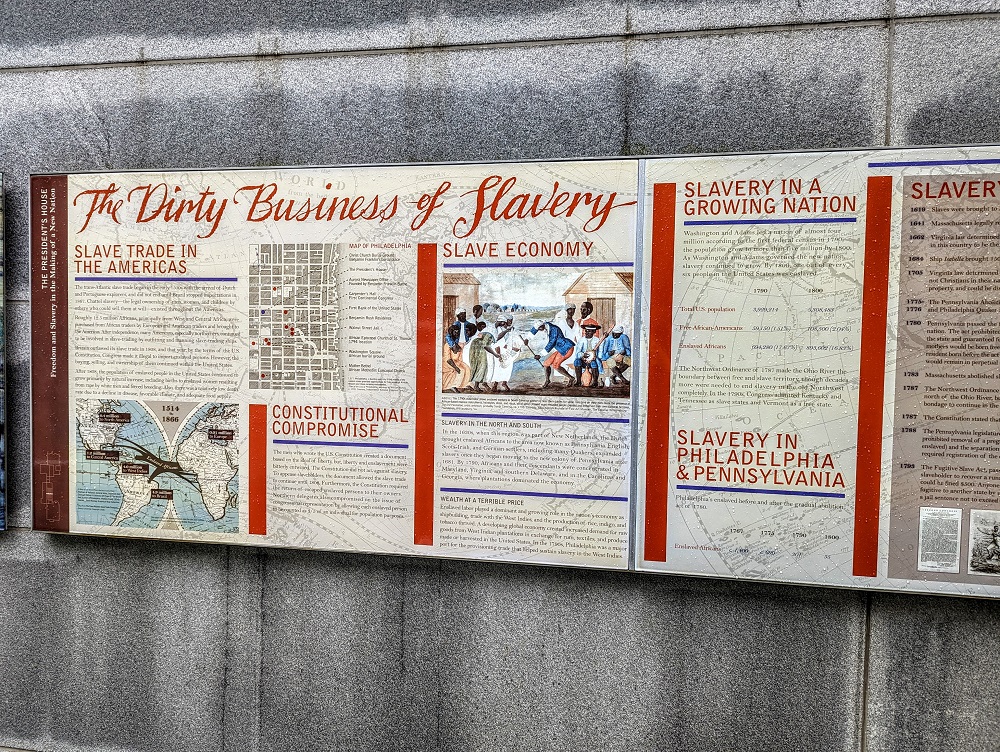
13) Signers’ Walk
On Chestnut St – half a block west of Independence Hall and the Liberty Bell – is Signers’ Walk. This is a walk of fame with small brass plaques commemorating the 56 members of the Continental Congress who signed the Declaration of Independence.
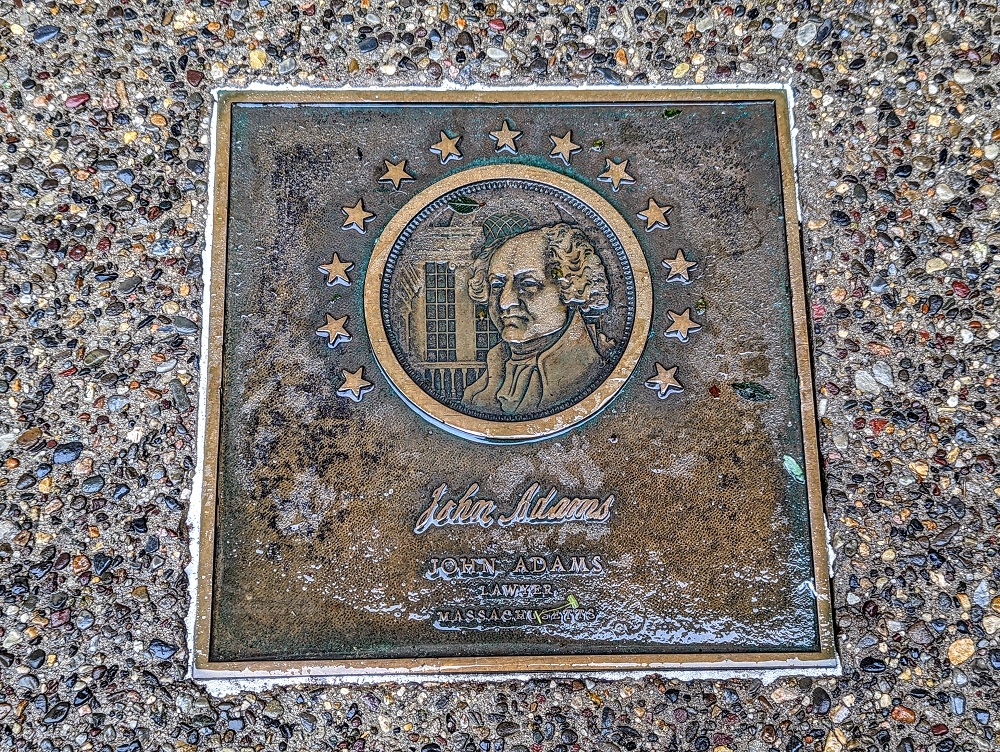
14) Keys To Community Sculpture
If you thought we were done with Benjamin Franklin-related things in Philadelphia, you’d be mistaken! A block west of the Betsy Ross House is Girard Fountain Park which features a sculpture of Benjamin Franklin called Keys To Community.
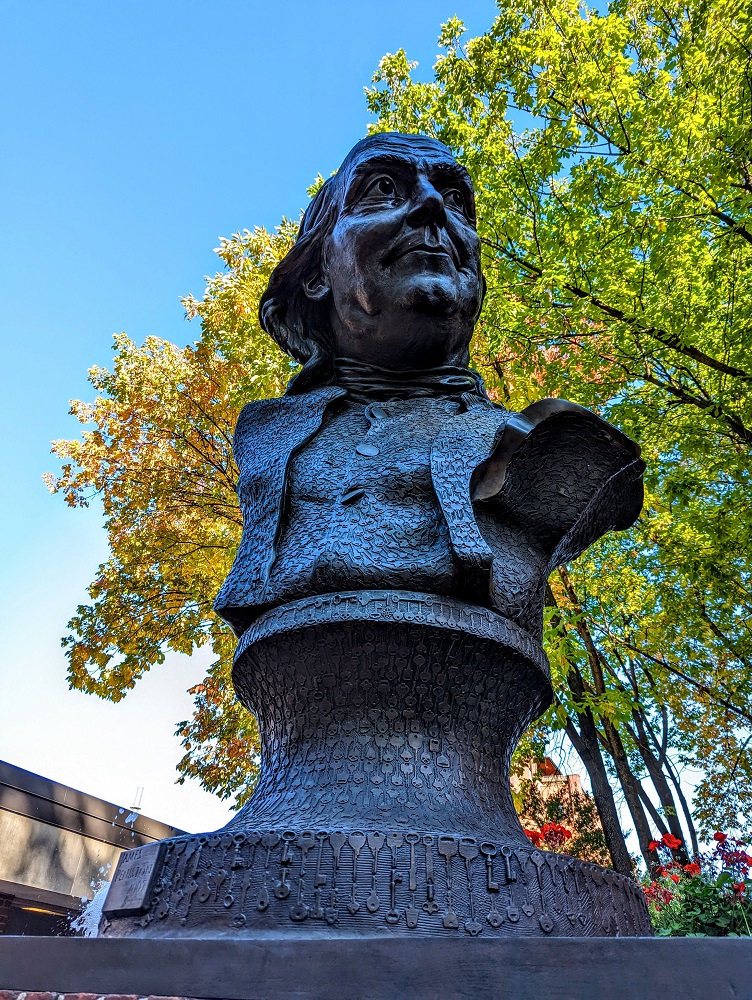
As you might have noticed in the photo above, the sculpture has a textured surface. That’s because it features casts of 1,000 keys – here’s the story behind the sculpture:
Keys To Community by Philadelphia sculptor James Peniston
Dedicated October 5, 2007
Peniston’s one-ton bronze sculpture is textured with casts of 1,000 keys collected from local schoolchildren. Its alloy contains several brass nameplates representing Philadelphia firefighters fallen in the line of duty since 1736.
It was partially funded by the Fire Department and by more than 1.8 million pennies donated by schoolchildren from 500 area schools.
Keys To Community replaced the beloved, but deteriorated 1971 sculpture of Franklin, ‘Penny Franklin’, a.k.a. Penny Benny, by sculptor Reginald E. Beauchamp.

15) Murals
Philadelphia has some excellent artists, as evidenced by all the beautiful murals you can find dotted around the city. Many of these have a historical nature, such as a silhouette of Benjamin Franklin featured in the center of a mural for the Philadelphia Fire Department. He’s included on that design because he created the Union Fire Company which was Philadelphia’s first fire service.
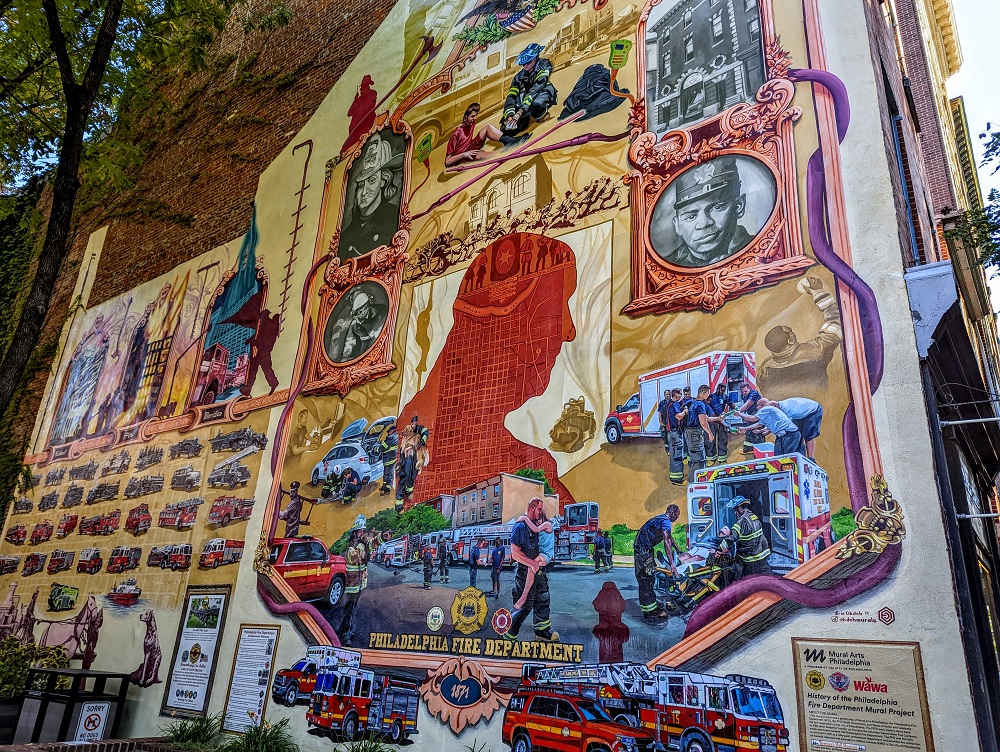
Here are just a few of the other beautiful murals we saw:
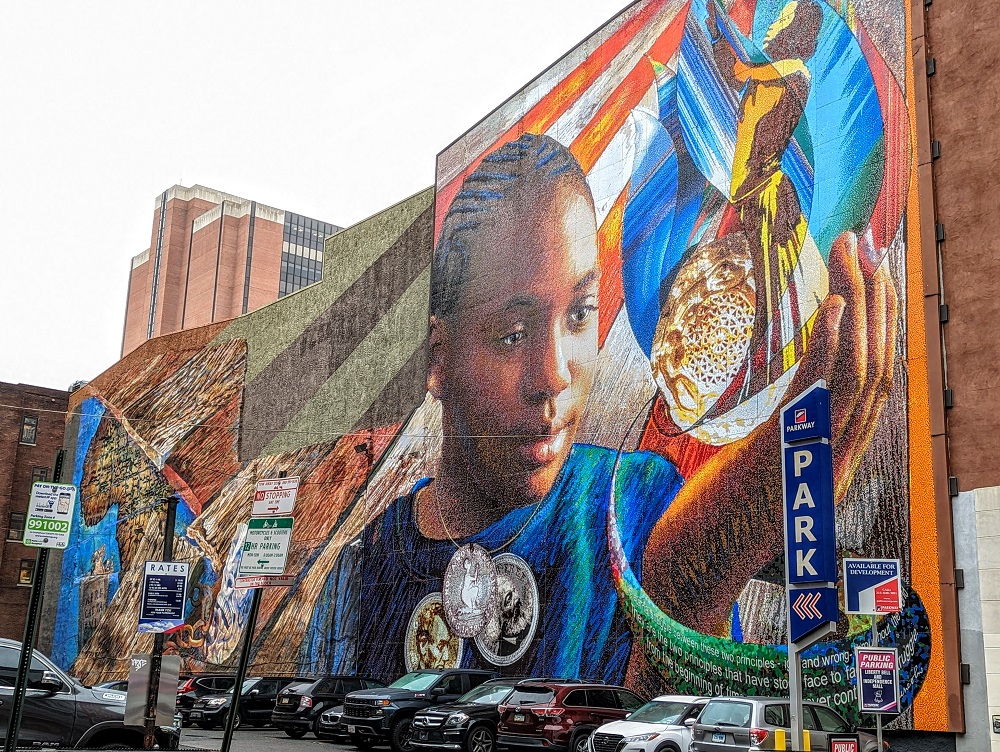
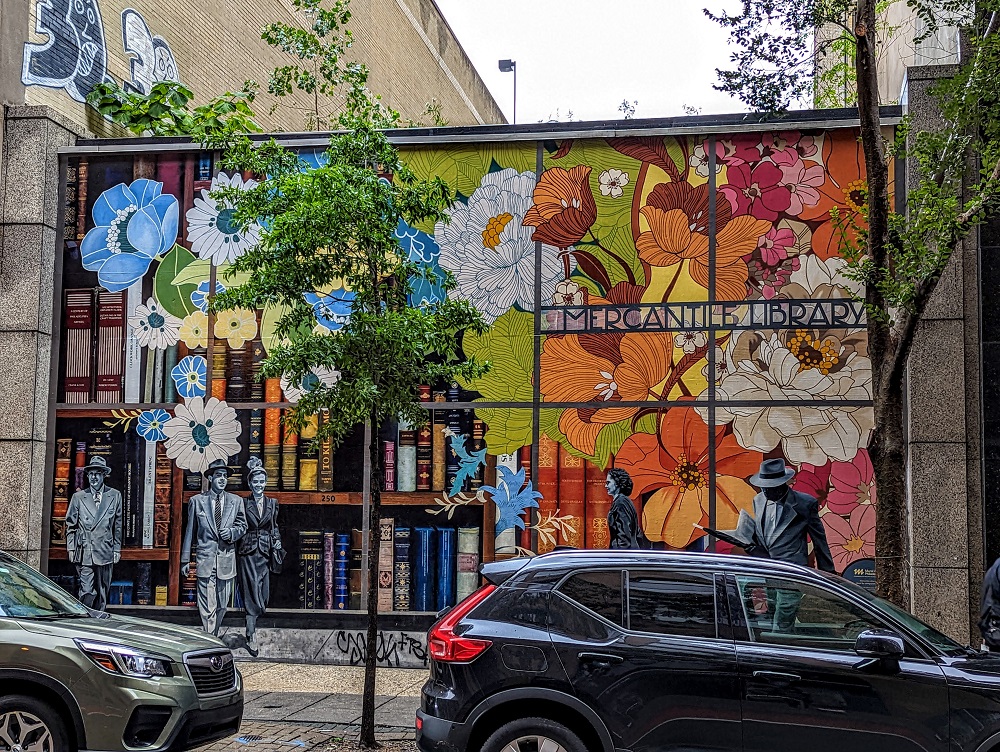
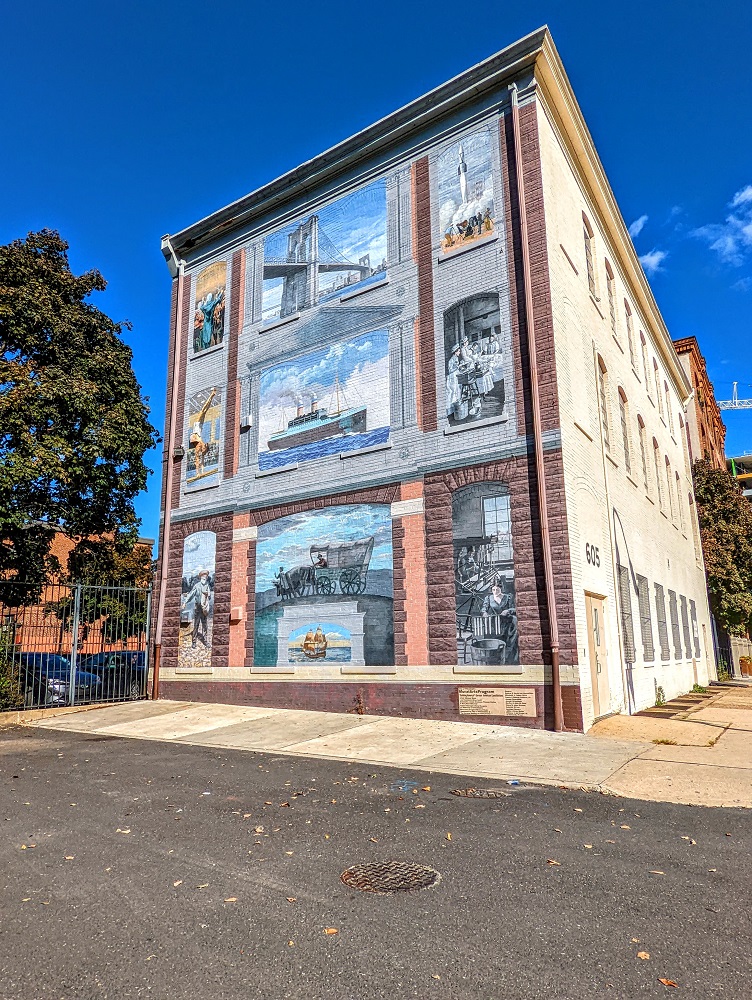
16) National Constitution Center
I had a stomach bug for several days when we stayed in downtown Philadelphia, so I was laid up in bed. Shae therefore went and saw some sites without me. The rest of the items on this list are therefore her impressions of them.
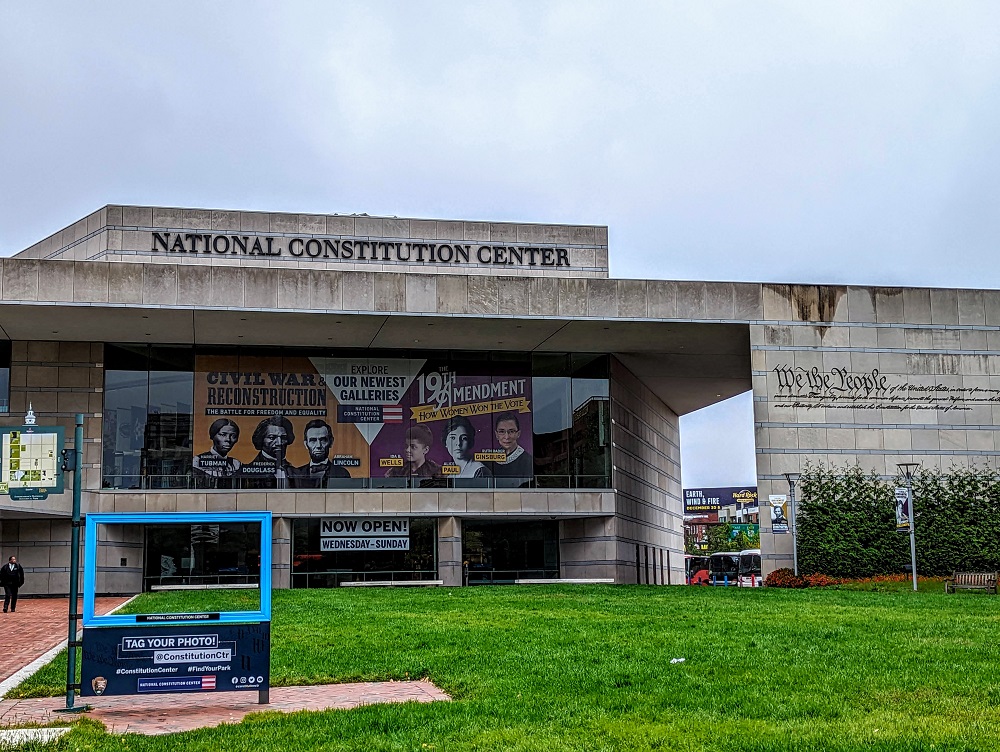
To describe the National Constitution Center in a word? Huge. And yet, there’s a lot of empty space. I’m not sure if that’s to make way for other future exhibits, crowds or some other design reason. All of the information is tightly packed together in a few areas with large open spaces around them.
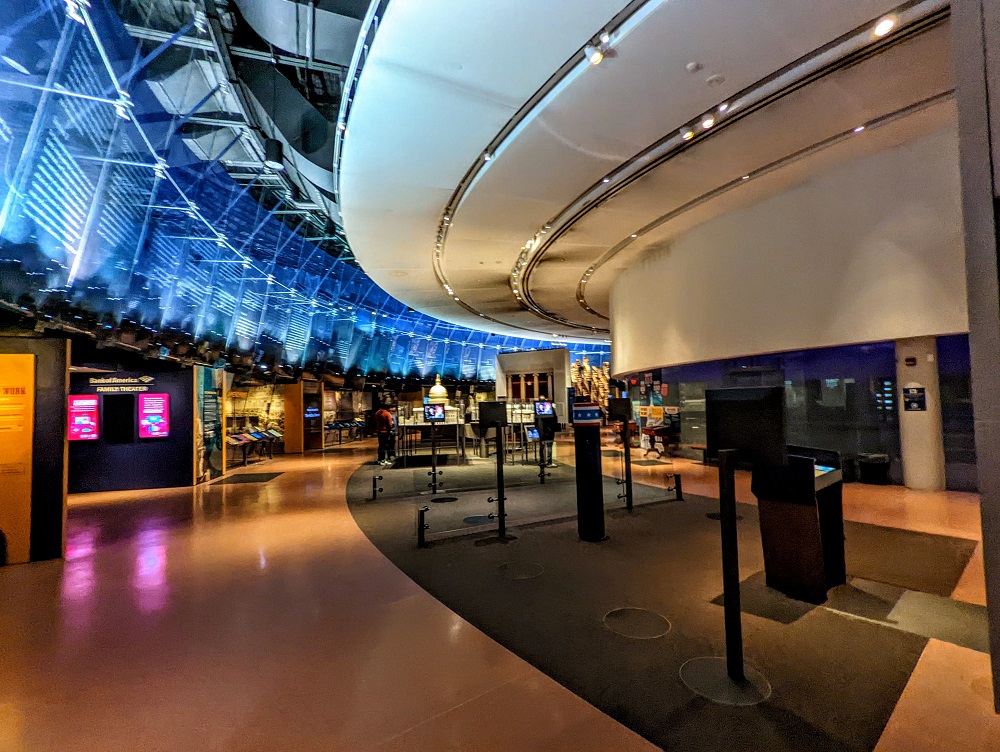
My favorite area was the Signers Hall where life size statues of the signers of the Constitution are on display with their names and state. All of them, except for one, have faces based on portraits of themselves so these are likely the closest we’ll get to seeing the founders in 3D “in the flesh.”

I also really appreciated the focus on the role of the Supreme Court and how the amendments have been made to the Constitution throughout history.
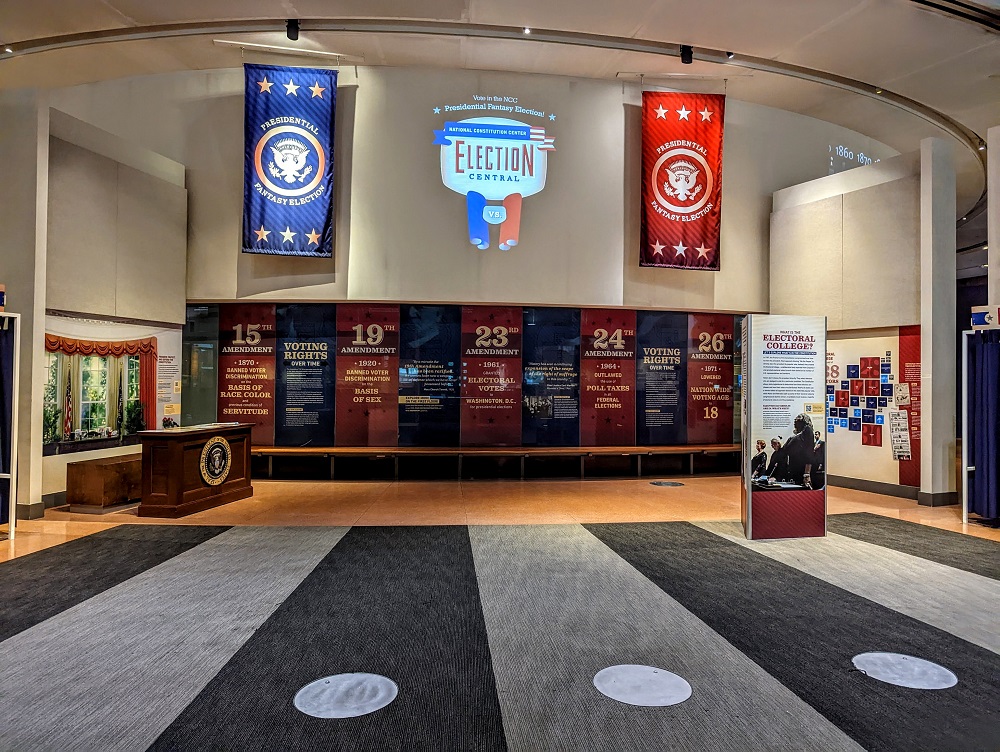
There’s a live action, spoken word presentation at the start of your visit that’s very powerful – it’s worth taking the time to watch it.
17) Edgar Allan Poe National Historic Site
Unlike Mr. Poe’s work, his home isn’t very engaging or thrilling. It’s mostly empty, but with a lot of information written throughout the space. Enthusiasts of Poe, historic house enthusiasts or collectors of National Park Service locations/stamps won’t want to miss this; if you’re none of those, you can probably give it a miss.
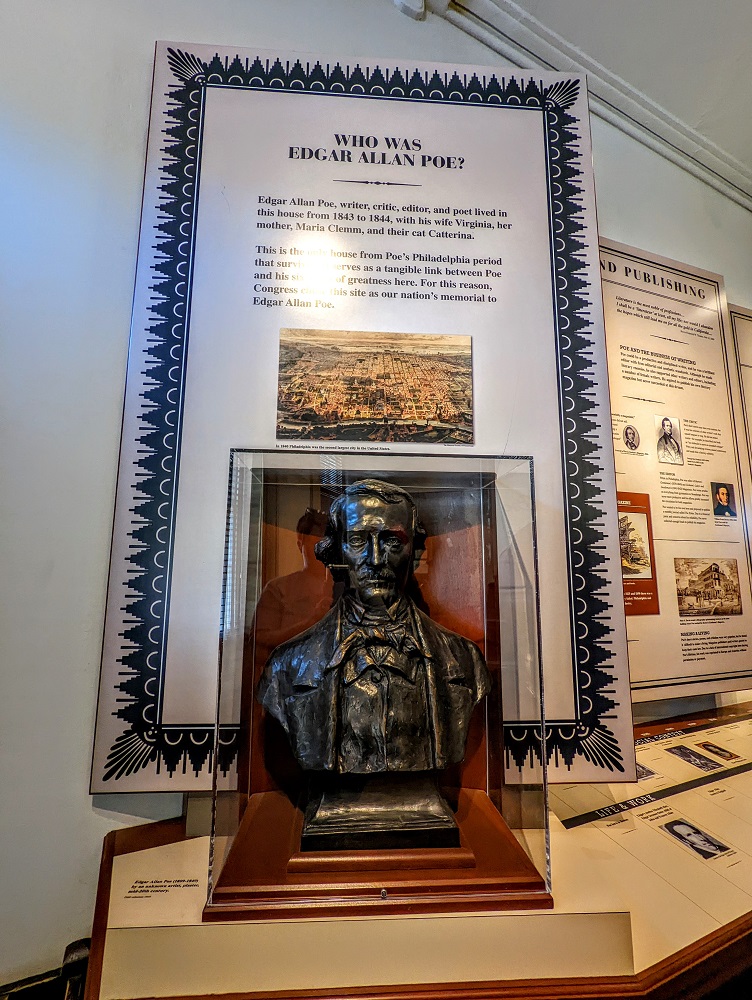
One of the great features were large printed and laminated cards about the house that you could read as you walked through each space – these were really helpful for understanding more about the location. But overall, it’s such a tight space that trying to read and take in the information provided about the Poes themselves was nearly impossible.
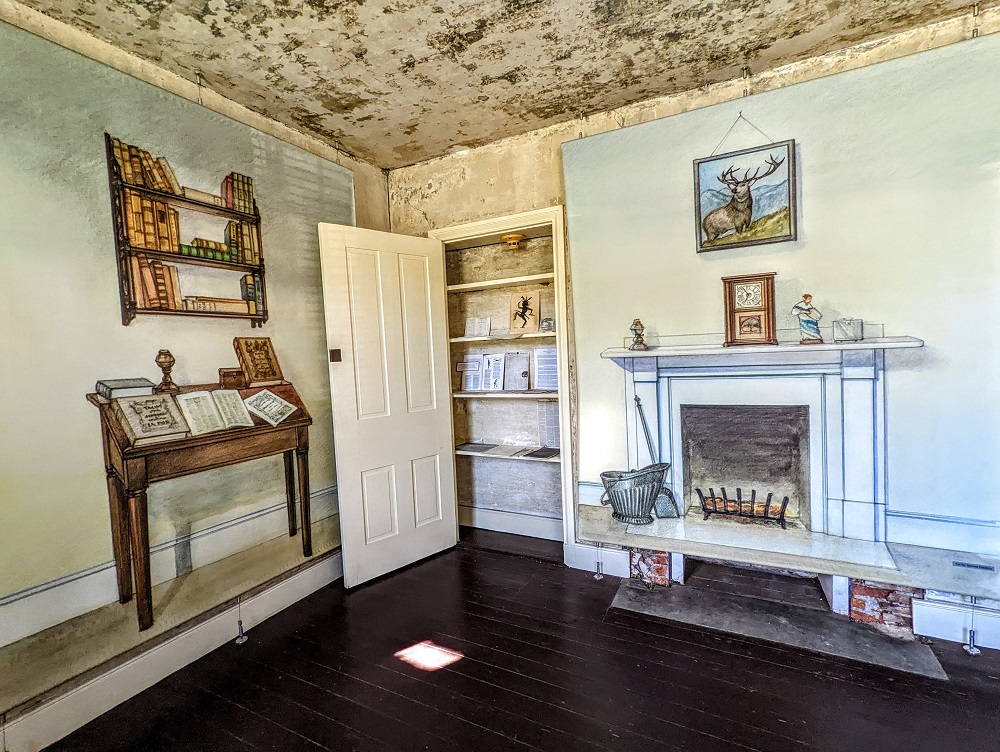
18) Benjamin Franklin Museum
Next to the Fragments of Franklin Court and Franklin Court Printing Office you can find the Benjamin Franklin Museum. It’s operated by the National Park Service but has a separate fee of $5 (at the time of writing) that’s not covered by a National Parks annual pass.
The museum is worth the $5 fee and the time to visit. It’s laid out really well; rather than simply being in chronological order of his life, it’s laid out by topic of Benjamin Franklin’s history like Statesman, Inventor, Youth, etc. There are a lot of interactive things to do and see, fun little videos with snippets of his history, and artifacts on display.
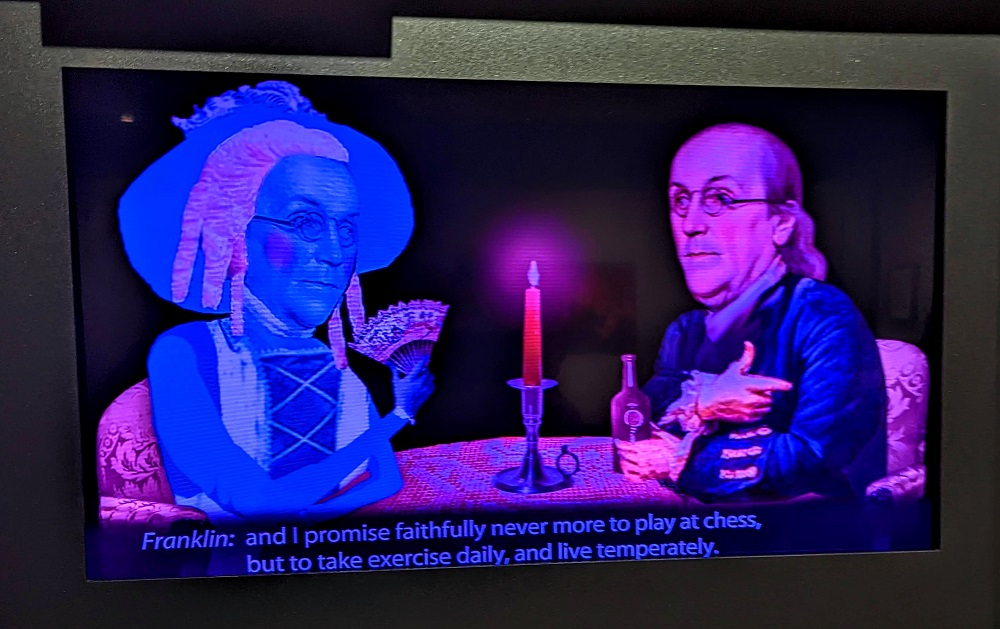
One of the things I thought was really interesting was the original printer ink balls owned by Benjamin Franklin himself. After seeing the print shop demonstration previously, this was a really fun “real life” thing to see not only from the time period but from his life.
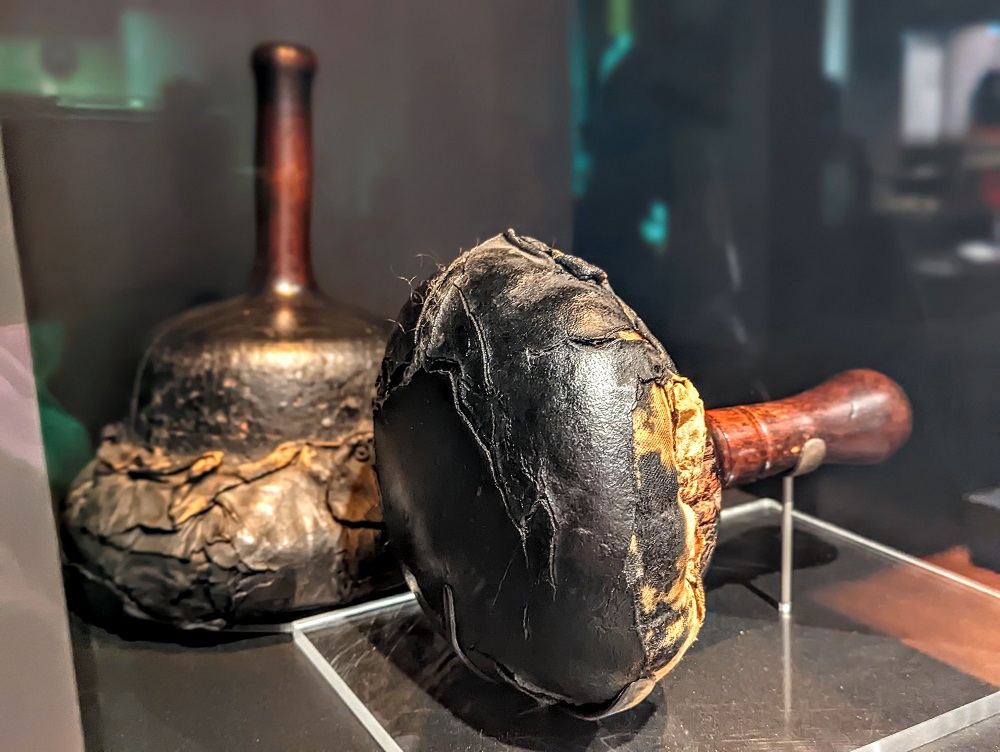
19) National Museum Of Industrial History
About an hour north of Philadelphia is the National Museum of Industrial History. Knowing that industry, and particularly steel, was an important part of Pennsylvania’s history, I wanted to make the excursion up to the museum in Bethlehem, PA. The museum and the remaining buildings of the Bethlehem Steel Corporation that you can see from the Hoover-Mason Trestle make it a great stop for anyone interested in engineering, steel, industrial history or machines.
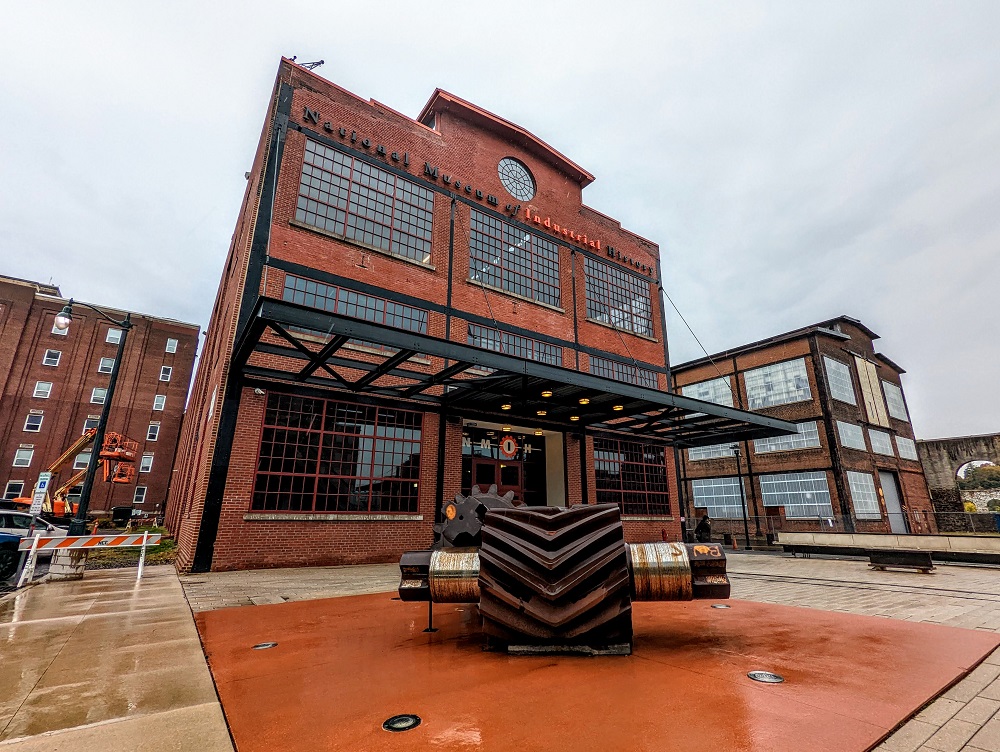
I really enjoyed learning about Mr. John Fritz who is considered one of the finest engineering minds in American industrial history despite not having any formal education. You can see a ton of cool machines, learn about what they do, and learn about the silk industry – a topic I’d never really heard or seen anything about previously. There’s two fun sheets for kids (and kids at heart) to use as scavenger hunts around the space to keep them engaged.
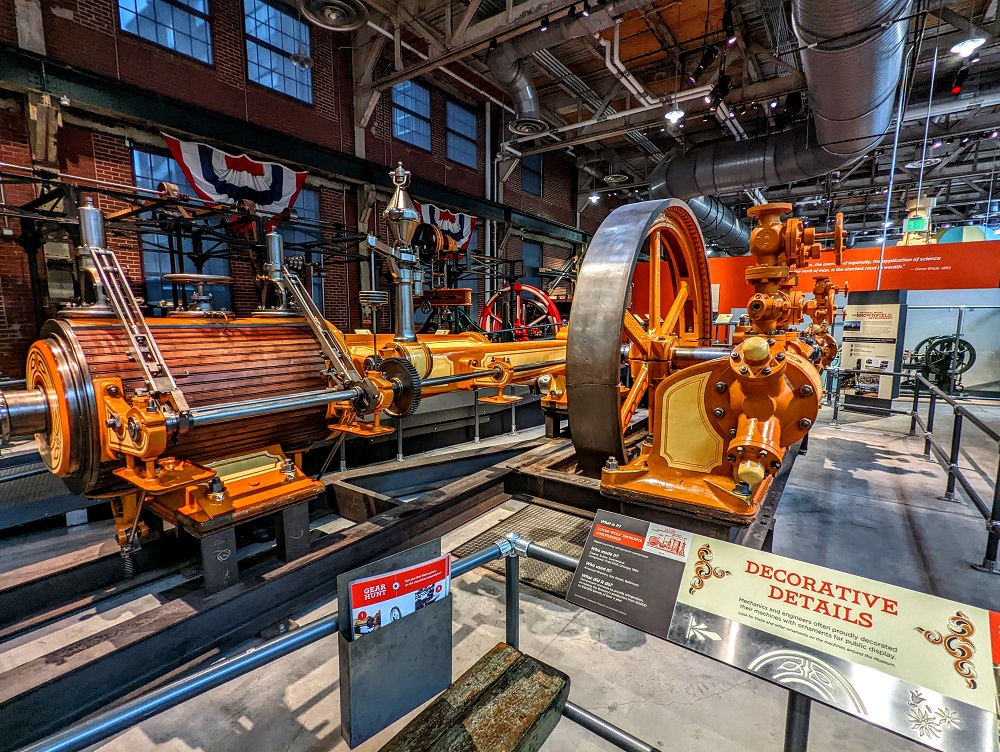
It was raining the day I visited and so it was a soggy visit up to the Hoover-Mason Trestle, but it made the machinery left standing desolate – which nature is starting to reclaim – all the more eerie and cool to see.
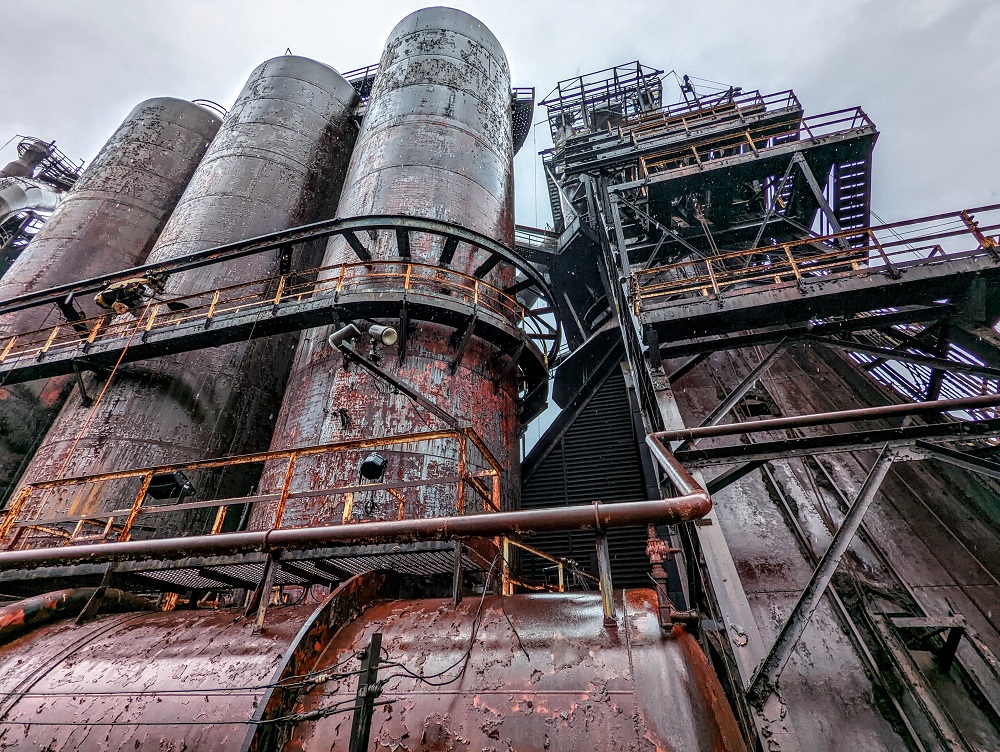
20) Thaddeus Kosciuszko National Memorial
The Thaddeus Kosciuszko National Memorial is a small site and is particularly interesting because it’s the smallest National Park site in the National Park Service.
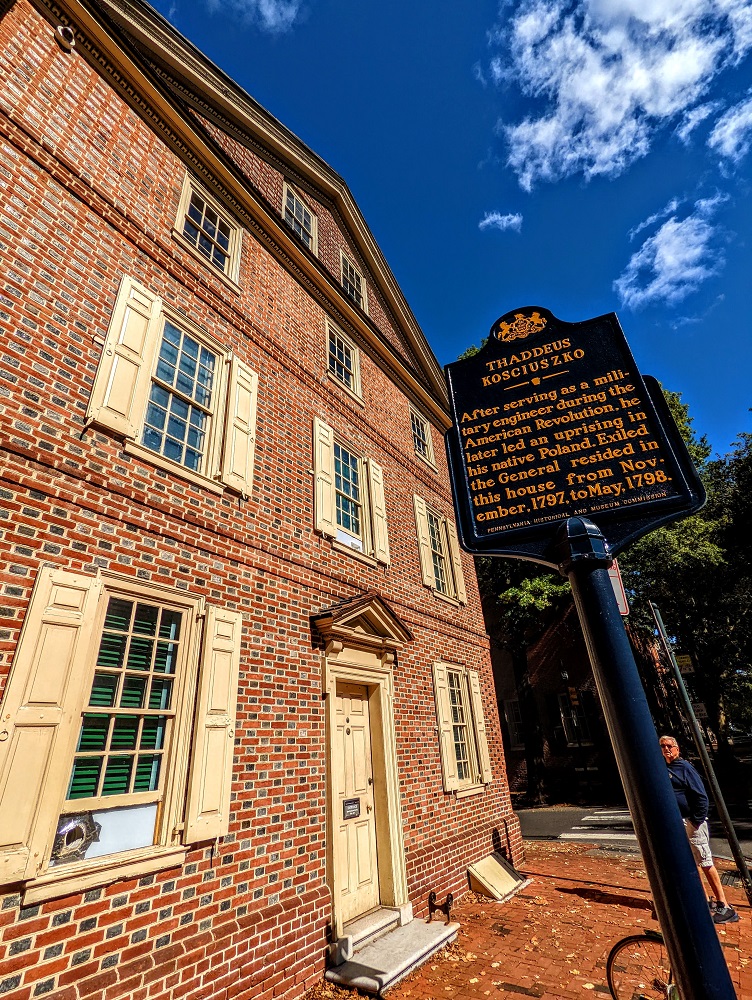
It shares the story of Polish engineer Thaddeus Kosciuszko and his relationship to the American Colonies during the American Revolutionary War.
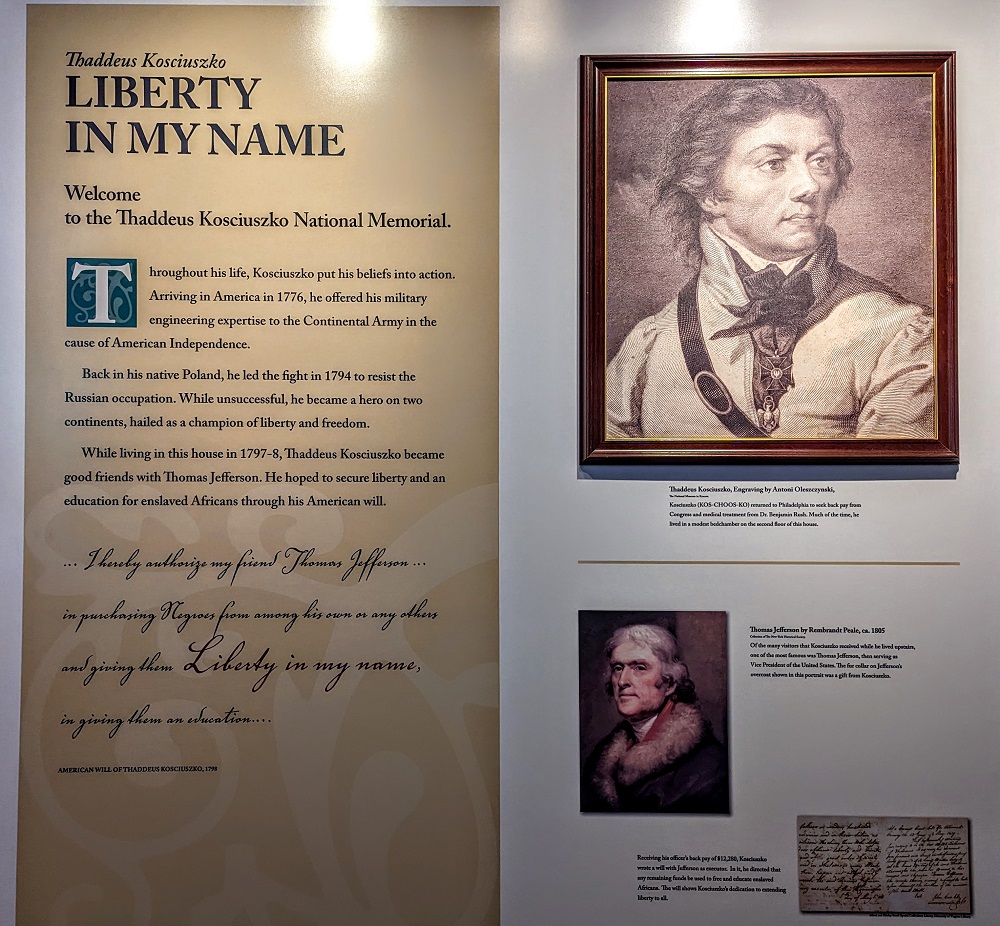
21) Mother Bethel AME Church
Mother Bethel AME Church is the oldest African Methodist Episcopal Church in America. It’s both the longest held parcel of land and the oldest church property to have been continuously owned by African Americans in the US.
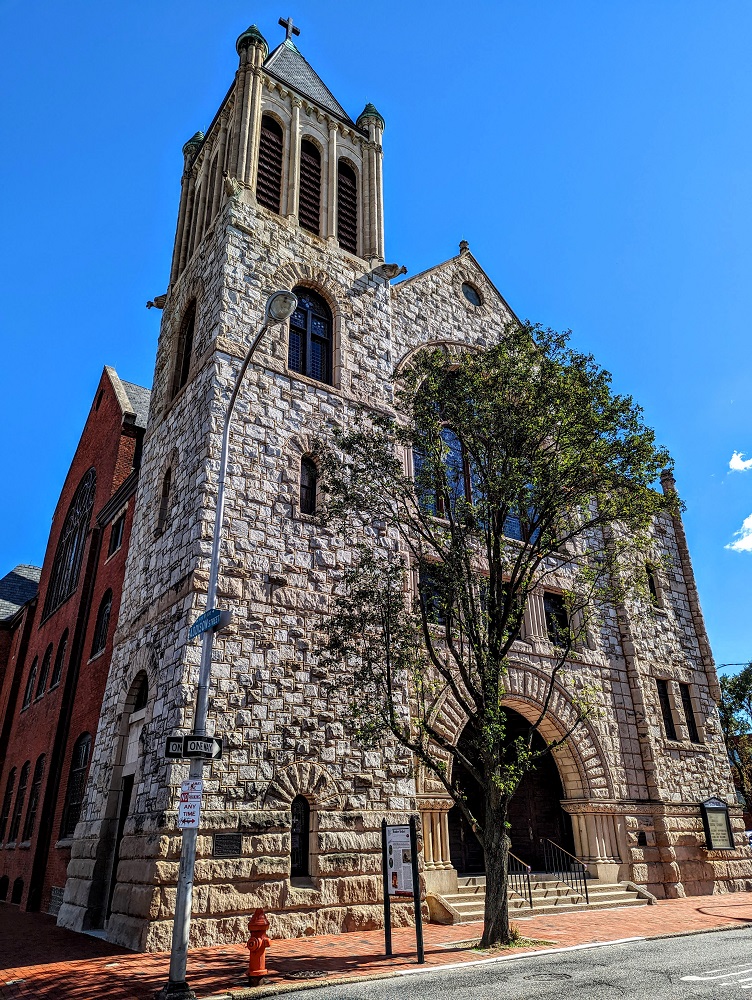
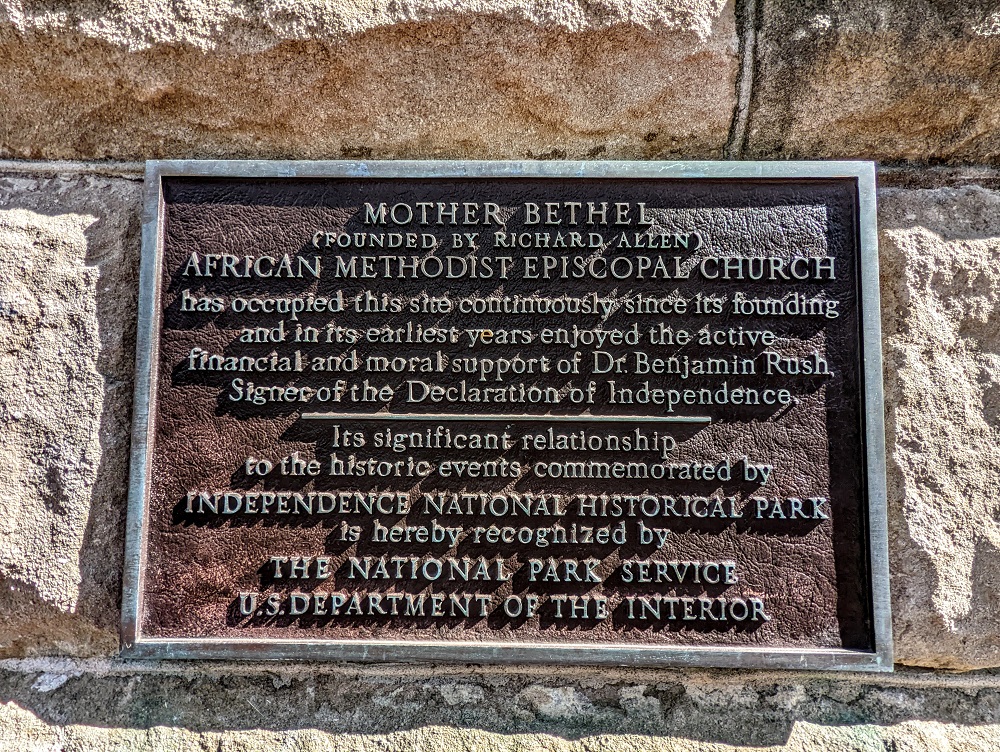
A Bonus – Lucha Cartel
I (Shae) was treated to dinner at Lucha Cartel in the Old City area of Philadelphia by some travel friends and it’s a can’t-miss during happy hour thanks to its drink specials and The Philly Taco.
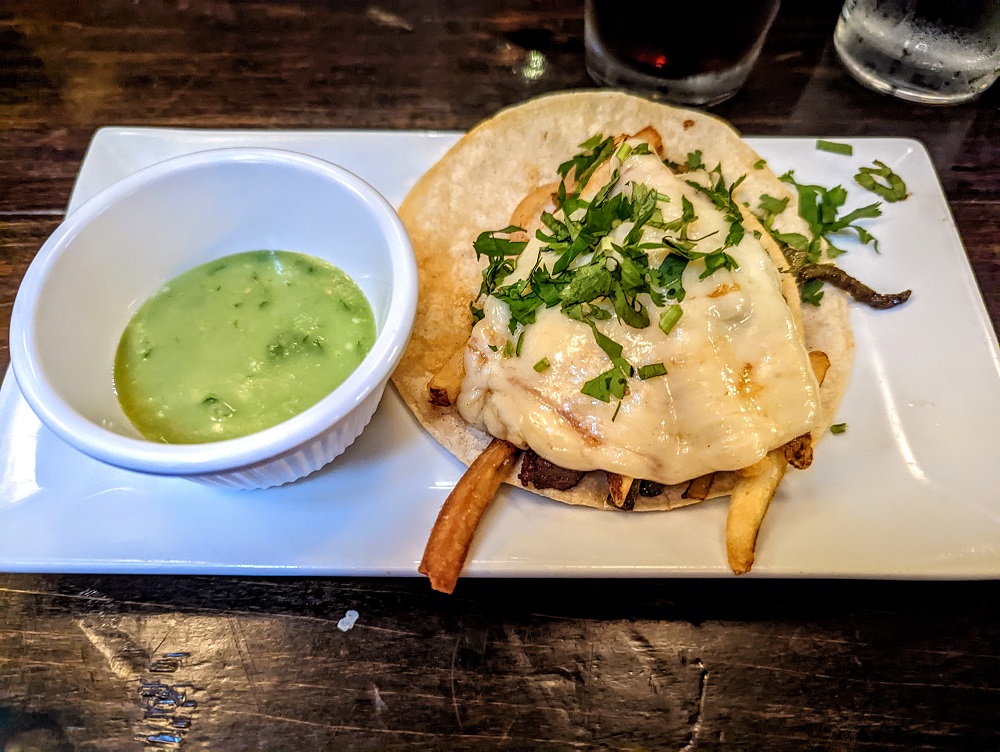
The Philly Taco is only served during happy hour, but it was so delicious I ordered a second one moments before happy hour was over. Steak, fries, cheese and amazing sauce all on a tortilla – you’ve got to stop in and try it. A tenuous historic link to include it on this list – its sister restaurant is National Mechanics which is based within the historic National Mechanics Bank building from 1837.
Question
Those are 21 historical places to see in Philadelphia that we visited, but it seemed like the city had far more history to offer than we got to see. What other locations should we add to our list of things to do if and when we find ourselves back in Philadelphia in the future? Let us know in the comments below.
Great blog. On the University of Pennsylvania campus there are two famous athletic facilities – Franklin Field, home of the Penn Relays and the Palestra, a holy site for college basketball. They are two of the oldest facilities still in use.
Thanks! I’ll add those to our list for the future.
I was there on a business trip in 2000 and we visited Victor’s Cafe. It is an Italian restaurant where the waiters are also opera singers. So, they serve a course, then sing a little, another course and more singing. I’m not even an opera fan, but it was so well done and the singers were great.
I’m not an opera fan either, but that does sound fun!
Wow, a jam-packed update! And such fabulous photos. I’m glad you two are getting to move forward with your list of places-to-see!
Thanks!